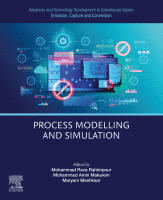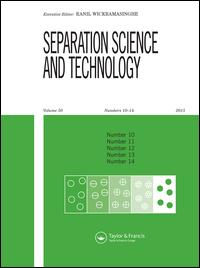Peymaneh Dehghan, Mohsen Abbasi, Ahmad Azari, Masoud Mofarahi, Mohsen Nowrouzi, Mahdieh Dibaj, Mohammad Akrami
Scientific Reports volume 15, Article number: 10601 (2025)

Ali Bakhtyari, Masoud Mofarahi, Adolfo Iulianelli
Energy Conversion and Management

90. Cu-BTC adsorbent for H2 purification: A study on adsorption kinetics and PSA performance
Separation and Purification Technology
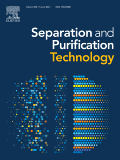
85. Chapter 3.30 - Methanol Reforming for Syngas and Hydrogen Production: Process Modeling and Simulation (Book Chapter)
, Masoud MofarahiComprehensive Methanol Science
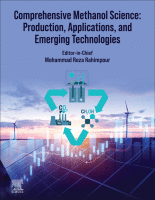
84. Chapter 3.35 - Methanol to Methyl Tertiary Butyl Ether (MTBE): Plant, Process, Operation, and Equipment (Book Chapter)
Morteza Arabzadeh, Masoud Mofarahi, Marzieh BaziariComprehensive Methanol Science

Peymaneh Dehghan, Mohammad Javad Dianat, Mohsen Abbasi, Ahmad Azari, Masoud Mofarahi, Nadir Dizge, Mika Sillanpää
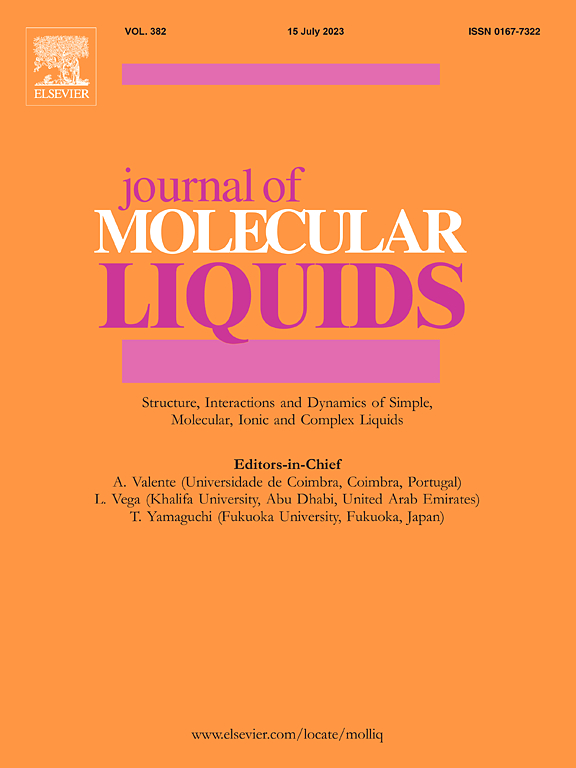
81. Chapter 2 - Introduction to natural gas hydrates extraction methods (Book Chapter)
Advances in Natural Gas: Formation, Processing, and Applications. Volume 3: Natural Gas Hydrates
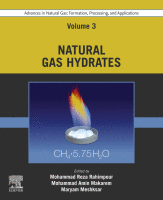
80. Chapter 11 - Natural gas thermodynamic hydrate inhibitors (Book Chapter)
Ali Bakhtyari, Ali Rasoolzadeh, Khayyam Mehrabi, Jafar Javanmardi, Masoud Mofarahi, Khashayar Nasrifar
Advances in Natural Gas: Formation, Processing, and Applications. Volume 3: Natural Gas Hydrates

79. Chapter 10 - Nitrogen rejection from natural gas by adsorption processes and swing technologies(Book Chapter)
Elham Khoramzadeh, Ali Bakhtyari, Masoud Mofarahi
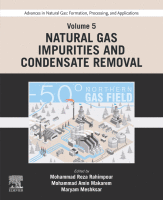
78. Chapter 2 - Modeling and simulation of natural gas sweetening by various adsorption technologies (Book Chapter)
Meisam Ansarpour, Masoud Mofarahi
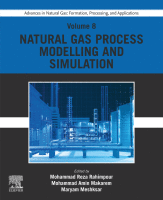
Meisam Ansarpour, Masoud Mofarahi
Encyclopedia of Renewable Energy, Sustainability and the Environment
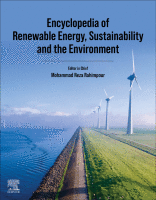
75. Chapter 9 - Natural gas hydrate–related disasters and case studies (Book Chapter)
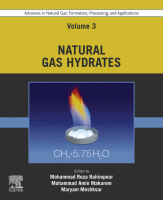
74. Chapter 11 - Swing technologies for natural gas sweetening: Pressure, temperature, vacuum, electric, and mixed swing processes (Book Chapter)
Meisam Ansarpour, Masoud Mofarahi
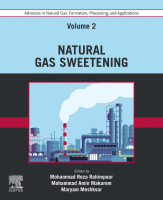
Meisam Ansarpour, Masoud Mofarahi

72. Kinetics of CO2 absorption in N-Methyldiethanolamine solution promoted by potassium sarcosine
, ,
Journal of Cleaner Production, Volume 433, 25 December 2023, 139816
https://doi.org/10.1016/j.jclepro.2023.139816
Abstract
Potassium sarcosine (KSar) shows promise as an effective co-promoter of N-methyldiethanolamine (MDEA), a tertiary amine known for its high CO2 absorption capacity but relatively slow kinetics. This study investigated the CO2 absorption kinetics in a KSar + MDEA + H2O solution using the pressure-decay technique in a stirred cell reactor. The experiments were performed at temperatures ranging from 303.15 K to 333.15 K, with varying concentrations of KSar (ranging from 3% to 15% by weight), while keeping the MDEA concentration constant at 20% by weight. Furthermore, the study involved assessing the physicochemical and mass transfer properties and comparing them to those of a solution containing MDEA (30 wt%) + H2O solution. Properties like density, viscosity, Henry's constant (), and the physical mass-transfer coefficient of the liquid phase () were measured and applied to analyze CO2 absorption kinetics. The overall reaction rate constant () was assessed using both termolecular and zwitterion mechanisms within a pseudo-first-order reaction regime. Additionally, was estimated via correlated Arrhenius power law expression of the individual rate contributions of CO2−MDEA, CO2–H2O, and CO2−KSar. The calculated values were found to closely match the experimental data, with absolute average relative deviations (AARD) of 4.53% and 3.03% for the termolecular and zwitterion models, respectively. The experimental results clearly showed that the rate of CO2 absorption, represented by , can be significantly enhanced by adding a small amount of KSar into the MDEA + H2O solution.
Chemical Engineering Journal, Volume 470, 2023, 144274
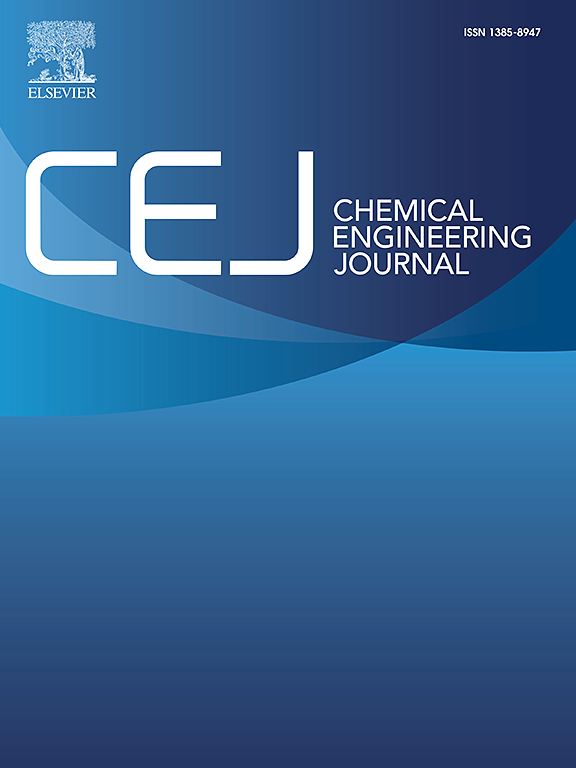
Abstract
Young-Ho Cho, Masoud Mofarahi, Kyung-Min Kim, Chang-Ha Lee
Separation and Purification Technology, Volume 322, 2023, 124200
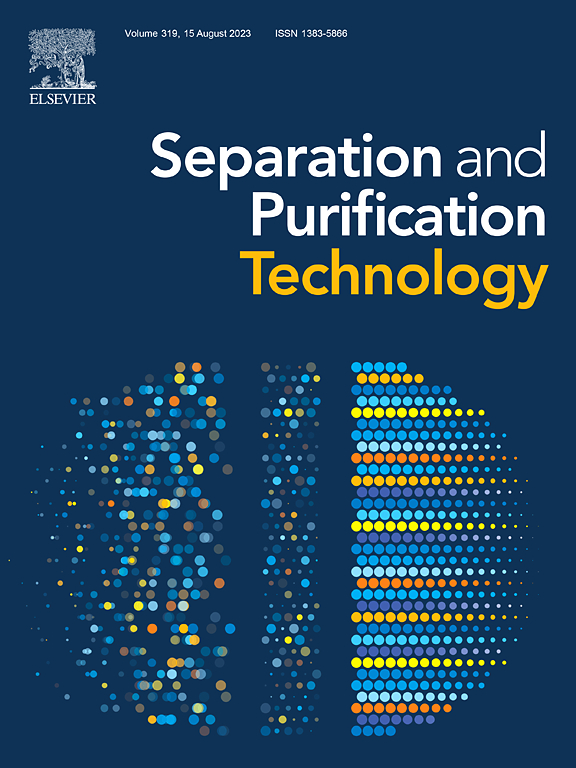
Abstract
Desulfurization of ultra-low sulfur species remaining in natural gas (NG) is important because of its critical effects on both chemical and clean energy applications. Environmental regulations and fuel cell guidelines require NG with a sulfur content of ppm or less. In this study, the adsorptive behavior of representative trace-level sulfur compounds in CH4 balance, H2S, and tetrahydrothiophene (THT) at 4 and 50 ppm, was investigated on zeolite 5A and 13X pellets. Breakthrough experiments were conducted in various binary systems (one sulfur compound in CH4), and surface analysis of the used zeolites was performed to elucidate the adsorption mechanism. The influence of the CO2 impurity level in CH4 on sulfur removal was also investigated in ternary systems (one sulfur compound with 1.5 % CO2 in a CH4 balance). The main pathway of H2S adsorption on zeolite 13X was catalytic oxidation, whereas it was presumed to be dissociative adsorption on zeolite 5A. In contrast, physisorption was dominant for THT removal in both zeolites. The lower contribution of chemisorption in THT led to less adsorptive amount than that in H2S removal at ultra-low concentrations. Furthermore, the molecular structure of THT (higher kinetic diameter) resulted in a faster breakthrough for zeolite 5A than for zeolite 13X. Therefore, more amount of H2S was removed than THT in both zeolites, and zeolite 13X demonstrated better performance for both sulfur compounds than zeolite 5A. Notably, the presence of 1.5 % CO2 in the feed promotes the catalytic oxidation of H2S.
Ali Bakhtyari, Khayyam Mehrabi, Ali. Rasoolzadeh, Masoud Mofarahi, Chang-Ha Lee
Results in Engineering, 2023,xx,xxxx
DOI:https://doi.org/10.1016/j.rineng.2023.101187
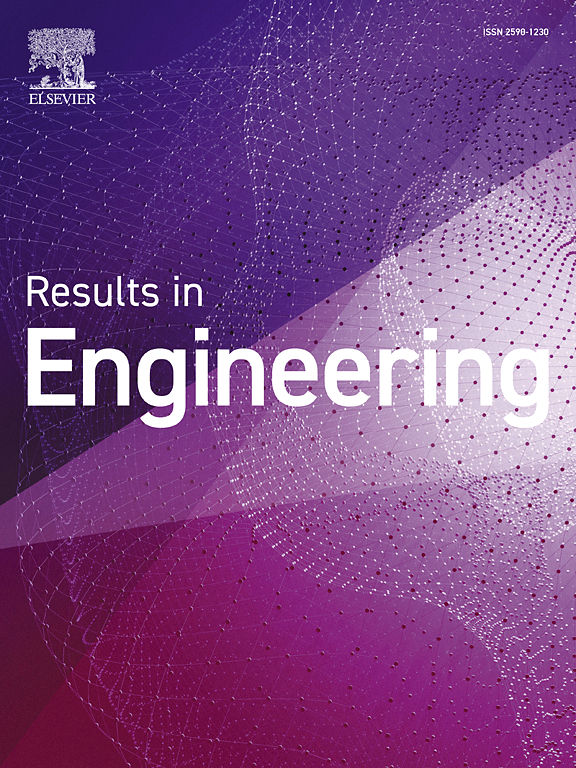
Abstract
Natural amino acid salt solutions (NAASs) are paving the way for greener carbon capture. This study developed simple and precise methods for the viscosity modeling of NAASs. Two approaches, namely, empirical correlations and artificial intelligence, were assessed using a large databank (16 NAAs, 3 alkaline compounds, 25 NAASs, and 1582 data points). Two general correlations and a global equation were suggested. Benefitting from the input of single reference-point data, the modified global equation yielded the best results with a 2.28% deviation. The other empirical models represented viscosities with less than a 7.20% error. The second approach, employing artificial neural networks (ANNs) with different algorithms, was also proposed. The best ANNs were a single-layer perceptron network with tansig + trainlm functions, a double-layer perceptron network with logsig + tansig + trainlm functions, and a radial basis function network with the maximum neurons. They managed to calculate the viscosities with errors of 2.82%, 1.82%, and 0.47%,respectively.
Ali Bakhtyari, Ali. Rasoolzadeh, Khayyam Mehrabi, Masoud Mofarahi, Chang-Ha Lee
Journal of Molecular Liquids, 2023, xx, xxxx
DOI:https://doi.org/10.1016/j.molliq.2023.122176

Abstract
Green processes that use environmentally friendly materials have gained significant attention, in particular in the fuel processing section. Alkaline salts of natural amino acids (NAAs), known as NAA salt solutions (NAASs), have significant potential to replace conventional solvents for achieving greener CO2 capture. Thermophysical properties, including the viscosity of NAASs, are essential for developing processes and their optimization. This study aims to develop a generalized theoretical model derived from free-volume theory (FVT) for estimating the viscosity of NAASs. Four different cases for parameter regression were applied to the largest viscosity databank investigated thus far (19 NAAs, three alkaline compounds, 29 NAASs, and 2039 data points), and the performance of the model using the parameters from the cases was evaluated. The highest accuracy was achieved (average absolute relative deviation percentage (AARD) = 1.54 %, average relative deviation percentage (ARD) = 0.09 %, R-squared (R2) = 0.9969) in the concentration- and solution-specific cases, but many parameters were required for the whole databank. In contrast, the most general case using global parameters resulted in the least number of parameters (six adjustable parameters) and showed reasonable accuracy (AARD = 10.42 %). A specific case in which the model parameters were obtained from each NAAS with a simple modification of the barrier energy parameter (α) yielded a higher accuracy (AARD = 4.12 %, ARD = 0.53 %, R2 = 0.9606) with a smaller number of parameters for the entire databank. The results demonstrated that the FVT is capable of modeling the viscosities of NAASs and can thus be employed for the simulation and optimization of thermophysical properties.
Peymaneh Dehghan, Fatemeh Keramat, Masoud Mofarahi, Chang-Ha Lee
Journal of the Taiwan Institute of Chemical Engineers, 2023, xx, xxxx
DOI: https://doi.org/10.1016/j.jtice.2023.104821
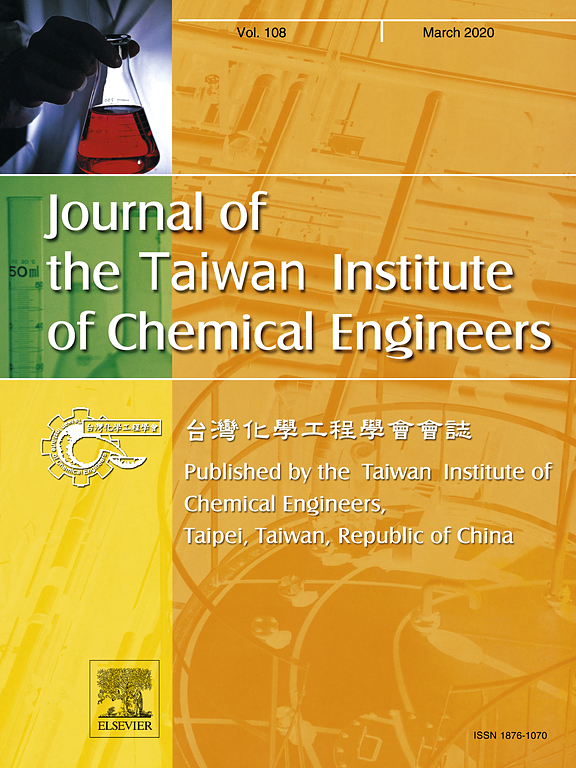
Abstract
Background: Based on the literature, increasing the heat transfer of nanofluids in the backward microchannel owing to the micro scales and significant effects of the step has been introduced as an attractive issue.
Methods: The effect of an inclined step combined with different types of obstacles on the heat transfer of graphene oxide nanofluid inside a double backward-facing step (BFS) microchannel is studied in this study. The numerical model according to the finite volume method (FVM) is utilized to discretize continuity, momentum, and energy equations via ANSYS Fluent 19.0 software. The simulation of double BFS microchannel by using computational fluid dynamics (CFD) is carried out to enhance the forced convection heat transfer of graphene oxide–water nanofluid. This work aims to illuminate the influences of the Reynolds numbers (1, 50, and 100), the nanoparticles volume fraction (0, 0.02, and 0.04), the triangular obstacle existence, and the obstacle location.
Significant findings: Based on the CFD results, the maximum Nusselt number of 12.7% and heat transfer coefficient of 12.3% are observed compared to the pure water in the case of triangular obstacle at the top of the first step with nanoparticle volume fraction of 4% and Reynolds numbers of 50 and 1, respectively. Furthermore, heat transfer improves with high pressure drop and friction factor is widely affected by the triangular obstacles and their locations.
Ali Bakhtyari, Roghayeh Bardool, Mohammad Reza Rahimpour, Masoud Mofarahi, Chang-Ha Lee
Chemical Engineering Science, 2023
DOI:https://doi.org/10.1016/j.ces.2022.118432
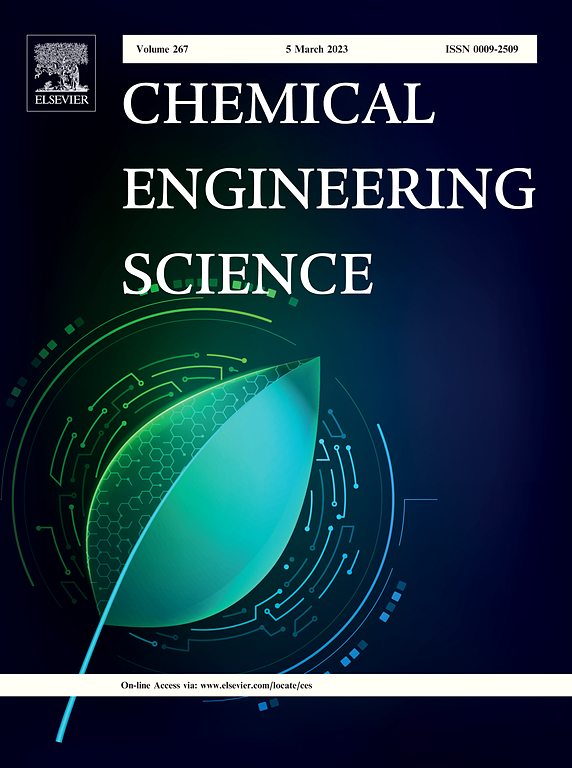
Abstract
Due to the significance of green processing and artificial intelligence (AI) modeling, herein, we proposed a mathematical and an AI model to enhance green hydrogen production from bio-alcohols in a membrane-assisted reactor. A sensitivity analysis for the effective variables was conducted in terms of conversion, thermal behavior, pressure drop, and hydrogen distribution. A single-layer perceptron network with tansig + trainlm functions and eight neurons yielded a 0.72 % error (mean squared error (MSE) = 2.69, R2 = 0.99994) in the bio-methanol reformer, while the same functions with nine neurons presented a 0.22 % error (MSE = 0.32, R2 = ∼1.00000) in the bio-ethanol reformer. Lastly, a multi-objective optimization was performed to determine the optimum operating conditions, which enhanced the hydrogen production in the bio-methanol (yMeOH = 0.4 and 0.204 mol/h at 517 K and 6 bar) and bio-ethanol (yEtOH = 0.3 and 1.8 mol/h at 823 K and 6 bar) reforming.
Ali Bakhtyari , Masoud Mofarahi , Adolfo Iulianelli
Energy Conversion and Management, 2022
DOI:https://doi.org/10.1016/j.enconman.2022.116562

This study is devoted to developing a combined mathematical and artificial intelligence modeling for simulating the conversion of bio-methanol into dimethyl ether. This methodology couples a precise mathematical model with single-layer perceptron artificial neural networks formulated by several combinations of training and transfer functions, to constitute a machine learning that overcomes the computational tools with the capability of learning without being explicitly programmed, so that it may be used to teach these tools to handle the data with high efficiency in order to predict the upcoming unseen ones precisely. Hence, the novelty of this study deals with the development of a machine learning modeling combined with artificial neural networks, benefitting from an extended mathematical-model-driven dataset, applied for the first time in the conversion of bio-methanol into dimethyl ether in large-scale catalytic dehydration reactors, assessing two process schemes, namely adiabatic and water-cooled operations. To this scope, datasets have been generated by an accurate mathematical model validated experimentally by reference pilot data, adopting the best equilibrium and kinetic expressions, and the simulated numerical data have been then employed as the source of the machine learning models. Extended databanks for the sensitivity analyses of the two process schemes have been then generated by the model (2688 data points in each case), 70% of which has been employed for the artificial neural networks training with mean squared error as the performance function. A single-layer perceptron network yielded the best performances in the adiabatic and water-cooled process schemes, revealing less than 0.5% deviations for the input variables (feed temperature, pressure, flow rate, and concentration) and outputs (temperature, pressure, and flow rates of methanol, dimethyl ether, and water). The simulations revealed that, as the best result of this work, methanol may be converted into dimethyl ether up to ∼80% at 498 K, depending on the validated equilibrium constant adopted, with a maximum error of 0.11%. As a further relevant result, this study demonstrated that analyzing the methanol conversion into dimethyl ether reaction as a function of several variables such as feed flow rate, feed methanol concentration, and input temperature, the accuracy of the neural network with a small number of neurons (5) did not provide accurate output results, whereas 15 neurons in the hidden layer intensify their precision, with the interesting feature that a single-layer perceptron network may detect even small changes to the operating variables.
64. Effects of synthesis parameters on the activity of cubic OMA supported nickel catalyst in CO2 reforming of methane
Farshad Gholizadeh, Ali Izadbakhsh, Masoud Mofarahi, Chang-Ha Lee
Journal of Porous Materials , 2022
DOI: https://doi.org/10.1007/s10934-022-01386-z

A study was conducted to examine the effects of calcination temperature and acid used for synthesis on the performance of Nickel catalyst in dry reforming of methane under various experimental conditions. The characterization of catalysts supported on a cubic-ordered mesoporous alumina was carried out by using powder XRD, N2 sorption, TPR, TPO, FTIR, XPS, high-resolution TEM, and thermogravimetric analyses. The catalyst synthesized by nitric acid and calcined at 500 °C demonstrated the best catalytic performance, achieving conversions of CH4 = 92% and H2/CO = 0.8 at 800 °C. During the long-term reaction of the catalyst, deactivation was observed after 100 h at 700 ℃, and GHSV = 27,200 mL/(h gcatalyst) due to the carbon deposition = 4.9%.
Ali Bakhtyari, Masoud Mofarahi, Chang-Ha Lee
Chemical Engineering and Processing: Process Intensification 2022
DOI:https://doi.org/10.1016/j.cep.2022.109182
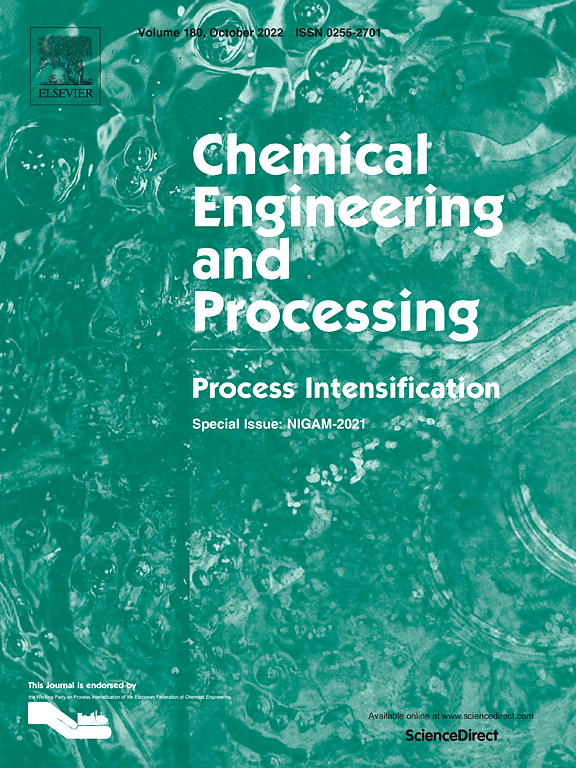
The development of advanced processes for the efficacious energy materials such as dimethyl ether (DME) from biomass-driven feedstocks is challenging. This feasibility study was aimed at achieving process intensification by optimizing the feed shift strategy for the methanol dehydration. The utilization of bio-methanol feed instead of the conventional stream was investigated in four systems configured with two processes (adiabatic and non-adiabatic) and two catalyst types (γ-Al2O3 and ZSM-5). A rigorous mathematical model was developed, which was validated against real data from pilot- and plant-scale reactors. The optimum conditions were then determined using a multi-objective genetic algorithm. The feed temperature, flow rate, and composition significantly affected the DME yield. The optimization indicated that the non-adiabatic reactor with the ZSM-5 catalyst offered higher DME yields at lower temperatures and pressures. However, the system with the shell-and-tube type reactor requires a more complex design. The highest DME yield (39.55%) was obtained when the system operated at 529.4 K and 21.3 bar for a 10616.06 kmol/h bio-methanol feed with 90% of the alcoholic compound. These results can establish guidelines for the design of reactors to convert bio-methanol into DME. A future study on economic constraints would shed light on screening for the best strategy
Khayyam Mehrabi, Ali Bakhtyari, Masoud Mofarahi, Chang-Ha Lee
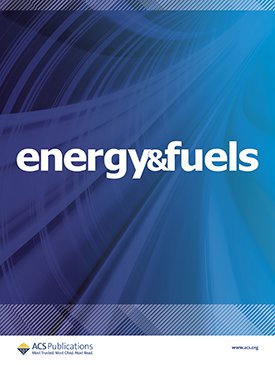
The extensive application of amino acid-based solvents has led to a growing demand for their thermophysical properties. A breakthrough in green carbon capture is anticipated by amino acid salt solutions (AASs), the properties of which should be calculated beforehand. This study develops facile and accurate models for the density calculation of AASs, which would be useful in further process simulations. A general, simple, and easy-to-use correlation for the densities, which is capable of predicting a vast variety of AASs precisely, is first developed. Then, artificial neural networks (ANNs) are assessed to train and test these systems. The developed correlation and ANNs are based on an extensive density databank (2007 data points of 28 AASs) that was prepared from various amino acid and alkaline compounds at different solution concentrations and temperatures. Both calculation procedures take into account the impact of temperature, concentration (wt %), and the molecular weights of amino acid and alkaline compounds as the input variables. To develop the correlation, 68% of the collected data was employed in model training, while 32% was utilized to assess the regressed parameters. The acquired errors of density calculations, in terms of the average absolute relative deviation percent (AARD%), were 1.210, 0.910, and 1.113% in the train, test, and total datasets, respectively, which confirms the excellent performance of the correlation. The developed general correlation was then compared to the ones from the literature that benefit from component-specific parameters. ANNs are also capable of calculating densities precisely. The best results of ANNs modeling were an error of 0.002% when the radial basis function (RBF) network was employed with the maximum number of neurons. It is inferred that the proposed correlation can work as a global equation to precisely estimate the densities of different AASs. In addition, ANNs offer a great performance to calculate the densities of AASs.
Meisam Ansarpour, Navid Aslfattahi, Masoud Mofarahi, R. Saidur
Journal of Thermal Analysis and Calorimetry , 147, 12067–12078 (2022)
DOI: https://doi.org/10.1007/s10973-022-11414-4

Abstract
In this study, the heat transfer performance of [MMI][DMP] ionic liquid solution (20 vol% IL + 80 vol% deionized water) in the presence of Mxene nanoparticle is investigated based on computational fluid dynamics numerical method considering temperature-dependent properties. It should be noted that the thermophysical properties of IoNanofluid were experimentally measured in our previous published study. The modeling results are validated with numerical and experimental works, and the validation results indicate good agreement between them. The effect of adding Mxene nanoparticle to the base liquid was carried out in a horizontal tube with 1–50 range of Reynolds number. The results found that the heat transfer coefficient increased by increasing the Reynolds number and also the nanofluids’ concentration. Moreover, it raises by increasing the fluid inlet temperature while the Nu number decreases. This is because the Nusselt number is in a reverse relationship with the heat transfer coefficient. The maximum heat transfer coefficient observed for 0.2 mass% INf at 308 K fluid inlet temperature and Reynolds number of 50 was 2207.83 W m2 K−1. However, the maximum Nusselt number detected for pure base fluid at 298.15 K fluid inlet temperature and Reynolds number of 50 was 13.22. Furthermore, the maximum heat transfer enhancement was observed for 0.2 mass% INf at Reynolds number of 50 and 308.15 K fluid inlet temperature (43.6%). Finally, a novel correlation is proposed to estimate the Nusselt number of nanofluids with R2 = 0.992 and AREP = 2.8%.
Atefeh Rezaei, Peyman Pakzad, Masoud Mofarahi, Amir Abbas Izadpanah, Morteza Afkhamipour, and Chang-Ha Lee
J. Chem. Eng. Data 2021, 66, 8, 2942–2958
DOI: https://doi.org/10.1021/acs.jced.0c01052
Abstract
The densities and viscosities of three solutions, namely, two binary solutions [triethylenetetramine (TETA) + H2O and TETA + 2-amino-2-methyl-1-propanol (AMP)] and one ternary solution (TETA + AMP + H2O) were measured at atmospheric pressure and in the temperature range of 303.15 to 343.15 K. Their viscometric and volumetric characteristics, such as the excess molar volume (VE), partial molar volume (V̅i), excess partial molar volume (V̅iE), partial molar volume at infinite dilution (V̅i∞), excess partial molar volume at infinite dilution (V̅iE,∞), apparent molar volume (Vφ.i), viscosity deviation (Δη), molar Gibbs free energy (ΔG), molar entropy (ΔS), and molar enthalpy (ΔH), were calculated to determine the viscous flows of the solutions, and they could also explain the empirical results theoretically. The degrees of the decrease in viscosities and densities of the solutions were different. The variations in the properties were also analyzed through their intermolecular interactions and molecular structures. Additionally, Δη and VE were obtained by the Redlich–Kister model, for the binary solutions, and the Cibulka model, for the ternary solution. With the given standard deviations, σ ≤ 3.55, for the binary solutions, and σ = 3.98, for the ternary solution, the viscosity data were parameterized by the Eyring–non-random two-liquid model. The obtained thermodynamic properties were reliable and could be employed in the design and optimization of a CO2-capture process, utilizing the studied solutions.
59. Equilibrium adsorption and kinetic study of CO2 and N2 on synthesized carbon Black–Zeolite composite
Elham Khoramzadeh, Masoud Mofarahi, Kyounghee Chung, Chang-Ha Lee
Separation and Purification Technology ,2022, 280, 119917
https://doi.org/10.1016/j.seppur.2021.119917

In this study, the preparation of a composite of zeolite-carbon black (CB) for enhancing the CO2 adsorption capacity of zeolites has been investigated. The composites were prepared by adding 5 wt% CB to zeolite 13X crystals via a hydrothermal synthesis method. The standard instrumental analysis techniques, including X-ray diffraction, scanning electron microscopy, thermogravimetric analysis, differential thermal analysis, and obtaining N2 adsorption/desorption isotherms at 77 K, were used to characterize the as-prepared composite. The adsorption isotherms of CO2 and N2 on the composite were measured by a volumetric method at 283, 303, and 323 K and up to 2.2 bar. Employing the Sips and Toth isotherm models, it was found that the Toth model has the best adaptability to the experimental isotherms data. The isosteric heats of adsorption were evaluated with the Clausius-Clapeyron equation. The binary adsorption isotherm and selectivity of CO2 over N2 were predicted using the ideal adsorbed solution theory. The adsorption kinetics of CO2 and N2 on the composite were determined by the non-isothermal kinetic model. The microporous diffusional time constants obtained from correlating the kinetic model with the experimental uptake curves were also compared with those of zeolite 13X. The results show the significant improvements in the adsorption capacity and rate by adding around 5 wt% CB to zeolite 13X.
Ind. Eng. Chem. Res. 2021, 60, 14547−14563
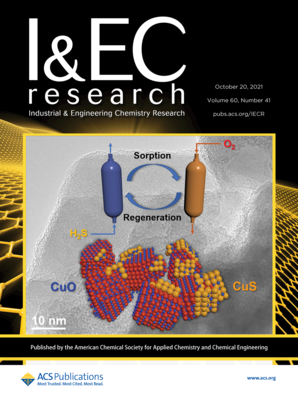
Abstract
Resin-based activated carbon beads through KOH activation (KRACs; 400−450 μm) were studied to elucidate the role of ultra-micropores in CO2 adsorption and separation. The improved textural properties resulted in an enhancing CO2adsorption of 55.4% (10.0 wt % at 303 K and 101.3 kPa), showing excellent cyclic stability. The change in CO2 adsorption capacity correlated well with ultra-micropore properties. However, it was noteworthy that excessive developed ultra-micropores reduced the CO2 adsorption rate. In the breakthrough experiments using CO2/N2 and CO2/CH4 mixtures, KRAC with the most developed ultra-micropores showed the highest CO2 adsorption capacity, but the tailing was higher. As CO2 concentration increased in the CO2/N2 mixture, the difference in adsorption capacity from other KRACs was highly reduced. Furthermore, the breakthrough time of the KRAC in the CO2/CH4 mixture was even shorter than other KRACs due to the preoccupied CH4 despite the highest adsorption capacity of CO2. The ultra-micropores should be carefully controlled for separation efficiency, considering adsorbates in mixtures.
57. Chapter 13 -Increasing mass transfer in absorption and regeneration processes via nanofluids
Nanofluids and Mass Transfer, 2022, Pages 345-368
DOI: https://doi.org/10.1016/B978-0-12-823996-4.00014-8

Abstract
Nanofluids produced by dispersing nanoparticles in the base fluid have been paid wide attention due to the reported superior thermophysical properties. Such properties would probably lead to a strongly promising potential for their application. Therefore numerous experimental and theoretical studies have been carried out to investigate the heat and mass transfer performance of nanofluids in recent years. This chapter focuses on mass transfer enhancement (including membrane contactor, falling film absorption, bubble absorption, and tray column absorption) and regeneration processes utilizing nanofluids. Moreover, the dominant mechanisms (such as bubble breaking, grazing effect, and hydrodynamic effect) and effective parameters (such as type of nanoparticles or the concentration of nanofluids) on the mass transfer and regeneration processes are investigated. Also, experimental setup, maximum mass transfer enhancement, various types of nanoparticle, and experiment conditions for each process are investigated, individually. Both the advantages and disadvantages as a result of using nanofluids in the mass transfer processes are mentioned.
56. Chapter 3 -Thermophysical properties of nanofluids
Nanofluids and Mass Transfer, 2022, Pages 39-96
DOI: https://doi.org/10.1016/B978-0-12-823996-4.00003-3

Abstract
Following the importance of nanofluids (NFs) and their applications in heating/cooling sections of the industries, their thermophysical properties are investigated herein. In this regard, an extensive study of density, viscosity, and thermal conductivity is developed. The effects of temperature and nanoparticle characteristics (type, concentration, and size) are evaluated based on the experimental data of the literature. These factors affect the thermophysical properties strongly. Furthermore, the theoretical and neural network models for the estimation of properties are reviewed. Although various NFs are potential working fluids for heat transfer applications, their successful development on the commercial scale relies on their performance under practical conditions. However, the assessment of the thermophysical properties of NFs could pave a reliable path toward successful development on the commercial scale.
, , A
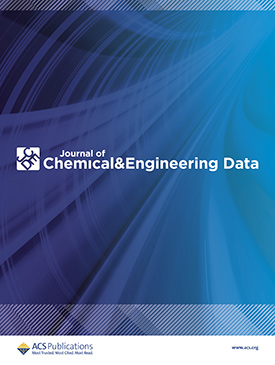
Abstract
The densities and viscosities of three solutions, namely, two binary solutions [triethylenetetramine (TETA) + H2O and TETA + 2-amino-2-methyl-1-propanol (AMP)] and one ternary solution (TETA + AMP + H2O) were measured at atmospheric pressure and in the temperature range of 303.15 to 343.15 K. Their viscometric and volumetric characteristics, such as the excess molar volume (VE), partial molar volume (V̅i), excess partial molar volume (V̅iE), partial molar volume at infinite dilution (V̅i∞), excess partial molar volume at infinite dilution (V̅iE,∞), apparent molar volume (Vφ.i), viscosity deviation (Δη), molar Gibbs free energy (ΔG), molar entropy (ΔS), and molar enthalpy (ΔH), were calculated to determine the viscous flows of the solutions, and they could also explain the empirical results theoretically. The degrees of the decrease in viscosities and densities of the solutions were different. The variations in the properties were also analyzed through their intermolecular interactions and molecular structures. Additionally, Δη and VE were obtained by the Redlich–Kister model, for the binary solutions, and the Cibulka model, for the ternary solution. With the given standard deviations, σ ≤ 3.55, for the binary solutions, and σ = 3.98, for the ternary solution, the viscosity data were parameterized by the Eyring–non-random two-liquid model. The obtained thermodynamic properties were reliable and could be employed in the design and optimization of a CO2-capture process, utilizing the studied solutions.
, ,
Separation and Purification Technology ,2021, xx (xx), pp xx–xx
https://doi.org/10.1016/j.seppur.2021.118696

In this study, a rate-based model of post-combustion CO2 capture was developed for an absorption column packed with Sulzer DX. A new amine solution, 4-diethylamino-2-butanol (DEAB), was applied to the absorber as an active CO2 capture solvent, and a sensitivity analysis on mass-transfer coefficients in liquid and gas phases ( and ), effective interfacial area (), and enhancement factor ( correlations was conducted to enhance the performance of the absorber. In the modeling, the absorber was divided into two sections—low capacity (less than 0.5 mol CO2/mol DEAB) and high capacity (more than 0.5 mol CO2/mol DEAB)—to improve model prediction accuracy, especially at high CO2 loading (). At of less than 0.5, the CO2 equilibrium molar concentration () was neglected, while at higher , the Deshmukh–Mather activity coefficient model was used to calculate . The solution procedure was validated against the axial experimental data of the CO2 mole fraction in the gas phase () and the liquid-phase temperature (). Then, a sensitivity analysis was performed for the profiles of , , H2O mole fraction in the gas phase (), , and gas-phase temperature () through various mass-transfer correlations for the Sulzer DX packing. The rate-based model with , and found that the correlation coefficient () and average absolute relative deviation () of data were 0.9889 and 3.12, and those of data were 0.9685 and 2.09. The sesitivity analysis of various correlations also revealed no significant difference between the calculated values using the different relationships. Finally, the effects of , , and liquid flow rate () as the most important parameters of the absorber on the value were investigated. The results indicated that has a significant impact on the values and consequently on the reaction rate.
53. Correlation and prediction of solubility of hydrogen in alkenes and its dissolution properties
Abstract
51. Chapter 9 - CO2 adsorption by conventional and nanosized zeolites
Advances in Carbon Capture,Methods, Technologies and Applications, 2020, Pages 193-228
DOI: https://doi.org/10.1016/B978-0-12-819657-1.00009-8

Abstract
The applicability of zeolites in controlling the emission of greenhouse gases (GHGs) like carbon dioxide, the most significant GHG, is investigated herein. The structure and properties of conventional and nanosized zeolites are initially introduced; subsequently, the adsorption capacities and selectivities of various types of zeolites are reviewed. Thereafter, the effects of determining factors such as the silica-to-alumina ratio, type of cation, temperature, and pressure are discussed. The zeolites that are beneficial for the storage and/or separation of carbon dioxide are introduced and compared. The analysis results reveal that types X, Y, and A zeolites are beneficial for both the storage and separation of carbon dioxide. Chabazite, which is a natural zeolite, exhibits high potential for the separation of carbon dioxide from methane-rich gaseous streams, such as natural gas and landfill gas. Type ZK-5 is also highly successful in the separation of carbon dioxide from nitrogen-rich streams, such as flue gas. Further investigation of nanosized zeolites revealed that both adsorption capacity and selectivity could be enhanced by reducing the size of zeolites through the synthesis method and further modification via amines impregnation and ion exchange.
50. Chapter 3 - CO2 absorption by common solvents
Peyman Pakzad, Masoud Mofarahi, MeisamAnsarpour, Morteza Afkhamipour, Masoud Mofarahi, Chang-Ha Lee
Advances in Carbon Capture,Methods, Technologies and Applications, 2020, Pages 51-87
DOI: https://doi.org/10.1016/B978-0-12-819657-1.00003-7

Abstract
This chapter summarizes previous studies on CO2 absorption with a special focus on amine scrubbing technology. First, an overview of carbon capture technologies is presented, including postcombustion, precombustion, and oxy-combustion capture. This subject is expounded by introducing different types of common solvents used in carbon absorption processes along with their specifications and disadvantages. In the next stage, various experimental methods and techniques of vapor-liquid equilibrium measurement, as well as different thermodynamic models for amine-H2O-CO2 systems presented in the literature, are discussed. Furthermore, the various mechanisms for CO2 absorption reaction kinetics based on the zwitterion, termolecular, and base-catalyzed hydration are described. Finally, mass transfer phenomena for CO2 absorption by amine solutions, amine regeneration, and amine degradation are investigated.
Fatemeh Keramat, Peymaneh Dehghan, Masoud Mofarahi, Chang-Ha Lee
Journal of the Taiwan Institute of Chemical Engineers, 2020, xx, xxxx
DOI:https://doi.org/10.1016/j.jtice.2020.04.006

Abstract
Numerical analysis of the free convection heat transfer in an H-shaped cavity loaded with alumina–water nanofluid is performed in this work. The entire bottom wall of the H-shaped enclosure and the top rib are at the hot temperature, the two sidewalls are at the lower temperature, and the others are insulated. This study aims to elucidate the influences of different variables on the heat transfer of nanofluid, namely the Rayleigh number (Ra = 104–106), nanoparticle volume fraction percentage (ϕ = 0–2%), aspect ratio (AR = 0.2–0.4), installation of baffle, location of baffle in the cavity, and the types of baffle boundary condition. To model the buoyancy force, the Boussinesq approximation is employed. The characteristics of flow and thermal transmission are presented in streamlines and isotherms. The results show that the heat transmission is improved by Rayleigh number enhancement and nanoparticle volume fraction due to the enhanced temperature gradient and the nanofluid thermal characteristics. In addition, the baffle installation at the bottom rib under a non-adiabatic boundary condition improve the heat transfer because the bottom wall has a larger mean temperature than the top wall.
Meisam Ansarpoura, Elnaz Danesh, Masoud Mofarahi
International Communications in Heat and Mass Transfer, 2020, xx, xxxx
DOI:https://doi.org/10.1016/j.icheatmasstransfer.2020.104556
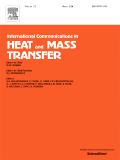
Abstract
The present research investigates the heat transfer enhancement by adding alumina nanoparticle to water, Ethylene glycol, and 1-ethyl-3-methylimidazolium ethyl sulfate [EMIM][EtSO4] ionic liquid (called ionic liquid based nanofluid or INf in synonym) as a base fluid. A horizontal tube with constant heat flux was modeled in
two-dimensional geometry with a diameter and length of 4.0 mm and 6.0 m, respectively. Al2O3 (20 nm in diameter) nanoparticles added to the base fluid in 0.5, 1.0 and 2.5 weight fraction percent. Various factors such as Reynolds number, nanofluids concentration, type of base fluid, and especially fluid inlet temperature studied in this research. Impressive results observed with variation in fluid temperature which for the temperature below room temperature (278.15 K) IL-based nanofluid shows greater heat transfer coefficient than water and Ethylene glycol-based nanofluids because of its higher thermal conductivity and viscosity at a lower temperature. And also, by adding nanoparticles to the base fluids and increasing the concentration of nanofluids, the heat transfer coefficient increased. Both the maximum heat transfer coefficient and heat transfer enhancement observed for IL-based nanofluid at 2.5 wt% concentration of nanoparticle. Finally, a correlation proposed for Nu number that satisfies for all studied nanofluids with R2 = 0.971 and AREP = 7.9%.
47. Equilibrium Adsorption Study of CO2 and N2 on Synthesized Zeolites 13X, 4A, 5A, and Beta
Elham Khoramzadeh, Masoud Mofarahi and
Chem. Eng. Data, 2020, xx, xxxx
DOI: http://dx.doi.org/10.1021/acs.jced.9b00690
Abstract
This study focused on comprehensive synthesis and analysis 9 for CO2 adsorption of the widely used zeolites 13X, 4A, 5A, and beta. Zeolites were synthesized utilizing the hydrothermal method. We paid special attention to the characterization of synthesized zeolites. The most common instrumental analysis techniques, including X-ray diffraction (XRD), scanning electron microscopy (SEM), the Brunauer−Emmett−Teller (BET) method, thermogravimetric analysis (TGA), differential thermal gravimetry (DTG), differential thermal analysis (DTA), and X-ray fluorescence (XRF), were utilized in this study. All results indicated the successful synthesis of these types of zeolites. The CO2 /N2 system was considered for the investigation of adsorption and separation of CO2. The adsorption equilibrium data of CO2 and N2 on pelletized zeolites were taken at temperatures of 283, 303, and 323 K and pressures up to 1.6 bar utilizing a volumetric method. The highest adsorption capacity was obtained for zeolite 13X and the lowest for zeolite beta. The Sips and Langmuir isotherm models were used for matching adsorption isotherm data. Experimental data showed the best correlation with the Sips model with six parameters. The isosteric heats of adsorption for CO2 and N2 on all the studied adsorbents were evaluated utilizing the pure adsorption isotherms data at studied temperatures by the Clausius−Clapeyron equation. Also, binary adsorption data and selectivities of CO2 over N2 on all adsorbents were determined by ideal adsorbed solution theory (IAST). It can be concluded from all the obtained results that the studied zeolites, especially zeolite 13X, can be promising adsorbents to capture CO2 in practical applications.
, Amir Abbas Izadpanah,
Journal of Natural Gas Science and Engineering 2020, 73, 103060
DOI: https://doi.org/10.1016/j.jngse.2019.103060 ISSN: 1875-5100
Abstract
In this study, new experimental data were reported for CO2 solubility in H2O þ 2-amino-2-methyl-1-propanol (AMP) þ methanol (MeOH) system by using a static-synthetic apparatus. The experiments were done in the temperature range of 313.15–353.15 K and the CO2 partial pressure range of 1.08–303.7 kPa. The concentrations (wt. %) of mixed AMP þ MeOH were 8.2 þ 41.2, 16.5 þ 32.2, 22.3 þ 27.7 and 30.6 þ 19.4. Also, the density of the hybrid solvent was measured using a pycnometer similar to concentration and temperature ranges. To correlate the experimental CO2 solubility data, three different models namely modified Kent-Eisenberg, Deshmukh-Mather, and artificial neural network (ANN) were used. The density data were correlated by Redlich-Kister equation. The results showed that the ANN modeling with an average absolute relative deviation (AARD%) and a correlation coefficient (R2) of 1.95 and 0.9981, respectively, were in good agreement with the experimental CO2
loading data in comparison with other models.
Keywords: CO2; 2-Amino-2-methyl-1-propanol; Methanol; Thermodynamic models; Artificial neural network
, Amir Abbas Izadpanah,
Energy & Fuel 2019, X, pp. xx-xx
https://doi.org/10.1021/acs.energyfuels.9b01957 ISSN: 1520-5029

Abstract
In this study, the effect of adding various activators (Alkyl amines) such as tetraethylenepentamine (TEPA), triethylenetetramine (TETA), diethanolamine (DEA), and monoethanolamine (MEA) on the CO2 loading of 2-amino-2-methyl-1-propanol (AMP) was investigated experimentally. With the aim of evaluating the performance of each activator on the CO2 loading, a vapor-liquid equilibrium (VLE) apparatus was used. The CO2 solubility data for AMP+TEPA+H2O, AMP+TETA+H2O, AMP+DEA+H2O, and AMP+MEA+H2O systems were measured in the range of 0.281-186.3 kPa. The experiments carried out under fixed absorption temperature of 313 K and different molar ratios of activators to AMP. The measured solubility data were modeled using the modified Kent-Eisenberg and the Deshmukh–Mather as thermodynamic models. The adjustable parameters of thermodynamic models were obtained using the simplex method as an optimization algorithm. The results of Deshmukh–Mather model showed a better prediction for experimental data than the modified Kent-Eisenberg model. By comparing the loading results in different mixing systems under constant temperature and at a constant concentration, the TEPA showed the highest absorption capacity among other activators (TETA, DEA, and MEA) assessed in this study. The superiority of TEPA is due to the presence of more amine groups in TEPA compared to other activators in combination with AMP.
Keywords: Alkyl amines, AMP, CO2 loading, Deshmukh–Mather, Modified Kent-Eisenberg, CO2 absorption
, ,
Fuel 2019, 256, pp. xx-xx
https://doi.org/10.1016/j.fuel.2019.115877 ISSN: 0016-2361
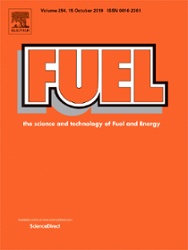
Abstract
Reliable equilibrium solubility data and consistent thermodynamic models for CO2 in novel amine solutions are necessary to design and simulate the CO2 capture process. In this study, the first experimental data for the equilibrium solubility of CO2 in a mixed 1-dimethylamino-2-propanol (1DMA2P) and monoethanolamine (MEA) aqueous solution are reported. The experiments were performed over a CO2 partial pressure of 3–186 kPa, at a total concentration of 2.5 M, and at two different temperatures (313.15 and 333.15 K). The CO2 solubility data were measured using a static-synthetic method based on the material balance method. The extended-universal quasi-chemical (e-UNIQUAC) model was applied to predict the experimental data. The adjustable parameters were either obtained from the model or taken from the literature for experimental binary, ternary, and quaternary systems. Moreover, the species concentration in the liquid phase, activity coefficients, solution pH, and solution ionic strength were predicted. The experimental results show that the CO2 absorption capacity increases as the blend mole ratio of 1DMA2P/MEA increases. An acceptable error was obtained between the experimental data and the model-predicted values, with an absolute average relative deviation of 22.4%. The e-UNIQUAC model employed in this study can be used to simulate the CO2 absorption process by the 1DMA2P-MEA solution.
Keywords: CO2 ,1DMA2P-MEA, e-UNIQUAC model, Equilibrium solubility, Species concentration
,
Arabian Journal for Science and Engineering 2019, xxx, pp. xx-x
DOI: https://doi.org//10.1007/s13369-019-03838-2 ISSN: 2191-4281
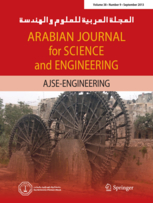
Abstract
The present study provides a modified approach in determining gas adsorption equilibria based on two-dimensional equations of state (2-D EOS). The proposed model utilizes temperature-dependent parameters in the general form of the 2-D EOS. These parameters were considered similar to other well-known isotherm models, such as Langmuir as specifics function of temperature. The proposed model was examined against various experimental single- and multi-component adsorption isotherm data. In most of the investigated cases, the proposed model reduces the error of predictions compared with temperature-independent two-dimensional equations of state. Moreover, utilizing temperature-dependent two-dimensional equations of state, isosteric heat of adsorption was theoretically obtained and compared with experimental heats of adsorption for different homogeneous and heterogeneous adsorption systems. Applying temperature-dependent parameters within 2-D EOS enables us to describe the heterogeneity of considered adsorption systems quite well. Predicted isosteric heats are in good accordance with the experimental data.
Keywords: Gas adsorption equilibria, Two-dimensional equations of state, Isosteric heat, Adsorption isotherm, Thermodynamic prediction
, , Peyman
Fluid Phase Equilibria 2019, xxx, pp. xx-xx
https://doi.org/10.1016/j.fluid.2019.02.008 ISSN: 0378-3812 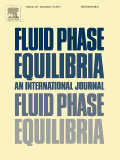
Abstract
In this study, the Deshmukh–Mather (D-M) model was used to evaluate the equilibrium behaviour of CO2 + diethylaminoethanol (DEAE) + H2O, CO2 + piperazine (PZ) + H2O, and CO2 + DEAE + PZ + H2O systems. The binary interaction parameters of the model for mentioned systems were obtained by using experimental solubility data from the literature. The ability of the model to predict the concentration profiles for all chemical species present in the liquid phase at different concentrations of amine solution was tested. The excess properties such as Gibbs energy, enthalpy, and heat capacity as a function of the CO2 loading of the amine were obtained. The solution pH and activity coefficients were also investigated. The results of thermodynamic modelling indicated that the D-M model predicted the experimental data with average absolute relative deviations (AARDs) of 7.15%, 11.3%, and 8.65%, respectively, for the CO2 + DEAE + PZ + H2O, CO2 + PZ + H2O, and CO2 + DEAE + H2O systems. The model applied in this study can be used for process simulation based on the rate-based or equilibrium-stage models of CO2 absorption with DEAE + PZ solutions..
Keywords: Thermodynamic modelling;DEAE;PZ;CO2 loading;Chemical species
41. Simulation and analysis of vacuum pressure swing adsorption using the differential quadrature method
Mohammad Amin Makarem, Masoud Mofarahi, Benyamin Jafarian, Chang-HaLee
Computers & Chemical Engineering, 2019, 121, 483-496
DOI: https://doi.org/10.1016/j.compchemeng.2018.11.017 
Abstract
A lab-scale vacuum pressure swing adsorption process for oxygen production was investigated both experimentally and theoretically. The experiments were conducted with up to 91% purity and 17% recovery. A complete set of governing equations were solved and compared using the finite difference method (FDM) and differential quadrature method (DQM). Based on the theoretical achievements, a new comprehensive algorithm is proposed, which is compatible with various numerical methods. The DQM method with 12 points combined with the FDM for time integration was determined to be accurate enough for predicting system behaviour. The artificial neural network (ANN) with two hidden layers and up to eight neurons was used to predict the process behaviour at more complex conditions. The agreement between the simulation results and experimental data shows that the algorithm accurately simulates the cyclic adsorption process, and the ANN is reliable for prediction of system behaviour considering variations in all parameters.
40. Adsorption Equilibria and Kinetics of CO2, CO, and N2 on Carbon Molecular Sieve
Yongha Park, Dong-KyuMoon, Dooyong Park, Masoud Mofarahi, Chang-Ha Lee
Sep. Purif. Technol. online
DOI: https://doi.org/10.1016/j.seppur.2018.11.069
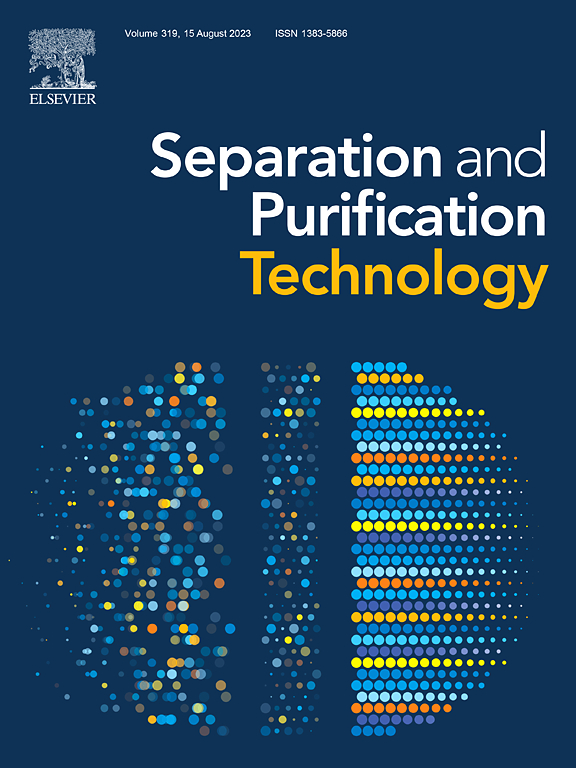
Abstract
Adsorption equilibria and kinetics of CO2, CO, and N2 on carbon molecular sieves (CMSs) were measured by a gravimetric method at temperatures of 298, 308, and 318 K and pressures up to 10 bar. The validity of the experimental isotherms and kinetics was confirmed by comparing with experimental results from an additional volumetric method. Experimental adsorption isotherms were well correlated with a temperature-dependent Sips model and the results were compared with the Langmuir and Sips models. The order of the adsorbed amounts and isosteric heats of adsorption were CO2 > CO ≥ N2 and their heats of adsorption changed from vertical interactions to lateral interactions with an increase in loading amount. The adsorbed amounts and heats of adsorption were lower for the CMSs than those of activated carbon, which has higher surface area and pore size. The microporous diffusional time constants (Dμ/r2) of CO and N2 could be obtained from an isothermal kinetic model, while a non-isothermal kinetic model was required for CO2 due to its higher heat of adsorption and adsorption rate. In addition, the variation in Dμ/r2 with surface coverage were well correlated by the Darken relation combined with Sips isotherm model, and a steep variation was observed from a surface coverage of 0.2 in all the components. The adsorption rate was highly affected by the electrical properties of the adsorbate rather than kinetic diameters. The order of adsorption rate was CO2>>CO>N2, while the order of the activation energies in the Arrhenius equation was opposite. The validity of obtained equilibria and kinetics results was confirmed by comparing the experimental breakthrough curves and dynamic simulation results in a CMS bed.
Jamali, S., Mofarahi, M. & Rodrigues, A.E.
Adsorption vol. 24 issue 5 July 2018. p. 481 - 498
DOI: https://doi.org/10.1007/s10450-018-9955-0 ISSN: 0929-5607.

Abstract
This study is an attempt to simulate and analyze a lab-scale two-bed pressure swing adsorption in order to investigate the performance of three different adsorbents (Cu-BTC as a new generation adsorbent, activated carbon, and zeolite 5A) with different feed compositions, and find a novel combination of layered bed. Four different flows of steam methane reforming reactor were considered as inlet feeds for hydrogen purification. Comparison of the feeds with different compositions showed that in the presence of high amounts of impurities, an adsorption bed of Cu-BTC produces hydrogen at a higher purity than activated carbon, zeolite 5A, or an activated carbon-zeolite 5A layered bed. The simulation results from feed 4 (H2:CO2:CO:CH4 = 0.4574:0.3174:0.0622:0.1630) with high amounts of impurities, showed that the use of Cu-BTC leads to hydrogen purity of up to 97.22%, while activated carbon, zeolite 5A, and the layered bed cannot improve the purity beyond 86.46%. This work shows that Cu-BTC is capable of being used in the first layer of layered beds. This was confirmed by comparing the performance of the three combinations of Cu-BTC, activated carbon, and zeolite 5A. The first configuration of the three adsorbents, in which the Cu-BTC was used as the first layer, purified hydrogen up to + 99.99% and recovered it up to 21.25%.
Keywords: Pressure swing adsorption; Layered bed; Cu-BTC; Simulation; Hydrogen purification
, ,
Fluid Phase Equilibria 2018, xxx, pp. xx-xx
https://doi.org/10.1016/j.fluid.2018.05.026 ISSN: 0378-3812 
Abstract
The proper selection of thermodynamic models is an important step in the design and simulation of CO2 removal processes using amine solutions. In this study, we aim to study the thermodynamic behaviour of the CO2 removal process by employing the extended-universal quasichemical (e-UNIQUAC) model for three novel amine systems, namely CO2+1DMA2P + H2O, CO2+3DMA1P + H2O, and CO2+DEAB + H2O. The thermodynamic behaviour was studied in terms of the CO2 loading of amines, the ion speciation profiles, the isothermal pressure-composition (Pxy) profiles, and the pH of the amine solutions. Adjustable parameters of the model include binary interaction parameters, and the volume and surface area parameters of the amine and protonated amine were determined using different objective functions based on the experimental data available in the literature. The ion and molecular speciation profiles are obtained and compared with nuclear magnetic resonance (NMR) data for CO2+1DMA2P + H2O and CO2+DEAB + H2O systems. The model predicted the experimental data with average absolute relative deviations (AARDs) of 8.06%, 13.39% and 16.50% for CO2 loading values of DEAB, 1DMA2P, and 3DMA1P, respectively. In addition, the results of Pxy profiles at different temperatures show that the azeotrope does not form in the 3DMA1P + H2O system. The adjustable parameters and predicted data of the applied e-UNIQUAC model may contribute to the rate-based simulation of CO2 absorption processes using novel amine systems.
Keywords: e-UNIQUAC; Amine; CO2 loading; Adjustable parameters; Chemical speciation
and ,
Sep. Purif. Technol. 2018, 202, pp 86-102
DOI: https://doi.org/10.1016/j.seppur.2018.03.026

Abstract
The aim of this study is to investigate the effects of key operating parameters of packed absorption columns on the performance of mass transfer considering the volumetric overall mass transfer coefficient (). The effects were studied for CO2 absorption by using 4-diethylamino-2-butanol (DEAB) and N,N-Diethylethanolamine (DEEA) mixed with monoethanolamine (MEA) as novel amine solutions. In doing so, an optimization–simulation framework was developed based on the two-film theory model, thermodynamic model, multi-layer perceptron neural network (MLPNN), and statistical technique. To predict the CO2 loading as one of the parameters in input of MLPNN model, the Deshmukh–Mather model, as an electrolyte thermodynamic model, was developed for CO2 + DEAB + H2O and CO2 + DEEA + MEA + H2O systems. The effect of enhancement factor on the was considered based on the series resistances model including pseudo-first order enhancemnt factor and instantaneous enhancemnt factor. To optimize and rank the key operating factors that simultaneously affect the , the Taguchi method was used. Statistical indices showed that our model could efficiently predict the experimental data with AARDs of 5.6%, 0.43% and 4.96%, respectively, for data, CO2 loading data of DEAB and DEEA + MEA. A significant order of process variables affecting the values was as CO2 mole fraction > amine temperature > amine flow rate > gas temperature > packing type > CO2 loading > amine concentration. Moreover, the sensitivity analysis results showed that by increasing the CO2 mole fraction in gas feed, gas temperature, and CO2 loading, the values decreased, and by increasing the amine concentration, amine flow rate, and amine temperature, the values increased.
Majid Dastanian, Amir Abbas Izadpanah, and Masoud Mofarahi
Chem. Eng. Data, 2018, 63 (5), pp 1675–1681
DOI: 10.1021/acs.jced.8b00021
Abstract
In this study, hydrate dissociation conditions of carbon dioxide in the presence of methanol/ethylene glycol + CaCl2 at the temperature range of 262.2–276.8 K and the pressure range of 1.49–3.36 MPa, not found in the related literature, were measured and reported. The equilibrium data were conducted by isochoric pressure search method. The experimental findings showed that methanol inhibition power was superior to that of ethylene glycol at similar mass concentrations. An available thermodynamic model was used to predict and compare the results with the measured experimental data. In addition, in order to investigate the inhibitory effect of various inhibitors as well as their synergy to one another, the suppressed temperature of hydrate formation in the presence of various inhibitory solutions used in this work and also in the similar studies in the literature was examined. This measurement indicated no effect of pressure on the reduction amount of suppressed temperature for each solution, so that it can be considered to be independent of pressure. Moreover, at low concentrations synergy level of CaCl2 with methanol or ethylene glycol was negligible, indicating no effect of these two inhibitors on the performance of each other. By increasing the concentration of alcohol and glycol, this rule was interrupted and inhibitors interacted each other and the synergy level increased.
35. Thermodynamic Consistency Test for Experimental Hydrogen Solubility Data in Alkenes
Mohammad Jamali, Amir Abbas Izadpanah, and Masoud Mofarahi
Chem. Eng. Data, 2017, 62 (12), pp 4371–4376
DOI: 10.1021/acs.jced.7b00729
Abstract
In this communication, a thermodynamic consistency test is performed on the isothermal solubility of hydrogen in alkenes and vapor–liquid equilibrium data for systems containing hydrogen and alkenes. The improved Peng–Robinson equation of state was used for this purpose. The fugacity coefficient of each component and compressibility factor of liquid and vapor phases were calculated by this equation of state. Thermodynamic consistency tests have been performed by rewriting the Gibbs–Duhem equation in terms fugacity coefficient and using the area test method. The results showed that most of the equilibrium data of the liquid phase were consistent, but for the vapor phase less than one-half of the data was consistent.
, ,
Heat and Mass Transfer, 54(3), 855-866
https://doi.org/10.1007/s00231-017-2189-y ISSN: 1432-1181

Abstract
In this study, artificial neural network (ANN) and thermodynamic models were developed for prediction of the heat capacity (CP) of amine-based solvents. For ANN model, independent variables such as concentration, temperature, molecular weight and CO2 loading of amine were selected as the inputs of the model. The significance of the input variables of the ANN model on the CP values was investigated statistically by analyzing of correlation matrix. A thermodynamic model based on the Redlich-Kister equation was used to correlate the excess molar heat capacity (CEP) data as function of temperature. In addition, the effects of temperature and CO2 loading at different concentrations of conventional amines on the CP values were investigated. Both models were validated against experimental data and very good results were obtained between two mentioned models and experimental data of CP collected from various literatures. The AARD between ANN model results and experimental data of CP for 47 systems of amine-based solvents studied was 4.3%. For conventional amines, the AARD for ANN model and thermodynamic model in comparison with experimental data were 0.59% and 0.57%, respectively. The results showed that both ANN and Redlich-Kister models can be used as a practical tool for simulation and designing of CO2 removal processes by using amine solutions.
, , ,,
Chemical Engineering Science
https://doi.org/10.1016/j.ces.2017.10.015 ISSN: 0009-2509

Abstract
In this study, an experimental setup based on the static-synthetic method was used to measure the new experimental data of CO2 solubility in an aqueous solution of 2-amino-2-methyl-1-propanol (AMP) + N-methyl-2-pyrrolidone (NMP) solution. For the static-synthetic method, the mass balance of compositions and the pressure–volume–temperature conditions were used for measuring the amount of absorbed CO2 by the AMP+NMP solution. The measurements were performed over a temperature range of 313.15 to 353.15 K, CO2 partial pressure up to 316.7 kPa, and in different concentrations of the AMP+NMP solution. Two models, modified Kent–Eisenberg, and Deshmukh–Mather, based on the empirical correlations and activity-fugacity approach, respectively, were used for the prediction of experimental data. The parameters of the equilibrium constants of the protonation and carbamate reactions for the modified Kent–Eisenberg model and the interaction parameters for Deshmukh–Mather model were obtained. For validation of our setup, a new set of experimental data for the solubility of CO2 in an aqueous solution of AMP, methyldiethanolamine (MDEA) and diethanolamine (DEA) were measured and compared with existing experimental data in the literature, and good results were obtained. The results of the modeling study showed that the Deshmukh–Mather model gave a better prediction of experimental CO2 loadings data than the modified Kent–Eisenberg. Also, the results showed that the solubility of CO2 in an aqueous solution of AMP+NMP increases as the CO2 partial pressure increases while the temperature decreases.
Afkhamipour, M.; Mofarahi, M.
Journal of Cleaner Production 2018,171(10) , pp 234-249
DOI:doi.org/10.1016/j.jclepro.2017.09.285 ISSN: 0959-6526
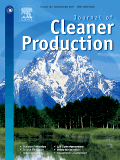
Abstract
In this study, new experimental data of CO2 equilibrium solubility for an aqueous solution of 1DMA2P, a novel ternary amine, are presented over a CO2 partial pressure range of 3–168 kPa, at different concentrations of 1DMA2P (2, 3 and 4 M), and in a temperature range of 298.15–333.15 K. Besides, new experimental data of viscosity and density are reported in a concentration range from 20 wt% up to pure 1DMA2P, in a temperature range of 298.15–333.15 K, and in atmospheric pressure. CO2 equilibrium solubility data were predicted by Deshmukh–Mather (D-M) thermodynamic model. From the experimental data of density and viscosity, thermodynamic properties including the thermal expansion coefficient (αp), excess molar volume (VE), viscosity deviation (∆η), activation molar enthalpy (∆H), activation molar entropy (∆S), and activation molar Gibbs free energy (∆G) were obtained. We have modeled and predicted the experimental data of viscosity based on Eyring’s theory and nonrandom two-liquid (NRTL) and Wilson models. The results showed that the Eyring-Wilson model predicts the experimental viscosity data better than Eyring-NRTL. For CO2 equilibrium solubility, D-M model gave a good prediction with an absolute average relative deviation of 2.64%.
Keywords: CO2 solubility, Viscosity, Density, 1DMA2P, Thermodynamic models
Afkhamipour, M.; Mofarahi, M.
Fluid Phase Equilibria 2018,457, pp. 38-51
https://doi.org/10.1016/j.fluid.2017.09.019 ISSN: 0378-3812 
Abstract
In this study, new experimental data of CO2 equilibrium solubility for an aqueous solution of 1DMA2P, a novel ternary amine, are presented over a CO2 partial pressure range of 3–168 kPa, at different concentrations of 1DMA2P (2, 3 and 4 M), and in a temperature range of 298.15–333.15 K. Besides, new experimental data of viscosity and density are reported in a concentration range from 20 wt% up to pure 1DMA2P, in a temperature range of 298.15–333.15 K, and in atmospheric pressure. CO2 equilibrium solubility data were predicted by Deshmukh–Mather (D-M) thermodynamic model. From the experimental data of density and viscosity, thermodynamic properties including the thermal expansion coefficient (αp), excess molar volume (VE), viscosity deviation (∆η), activation molar enthalpy (∆H), activation molar entropy (∆S), and activation molar Gibbs free energy (∆G) were obtained. We have modeled and predicted the experimental data of viscosity based on Eyring’s theory and nonrandom two-liquid (NRTL) and Wilson models. The results showed that the Eyring-Wilson model predicts the experimental viscosity data better than Eyring-NRTL. For CO2 equilibrium solubility, D-M model gave a good prediction with an absolute average relative deviation of 2.64%.
Keywords: CO2 solubility, Viscosity, Density, 1DMA2P, Thermodynamic models
Afkhamipour, M.; Mofarahi, M.
International Journal of Greenhouse Gas Control vol. 65 October, 2017. p. 137-148
DOI:doi.org/10.1016/j.ijggc.2017.09.006 ISSN: 1750-5836
Abstract
This study presents the rate-based modeling for CO2 absorption into a novel amine solution, 1DMA2P, in a column packed with random packing. The rate-based model has been developed on the basis of five key elements: the heat and mass transfer balances, thermodynamic model, estimation of physicochemical properties, enhancement factor model, and calculations of column internal hydraulic. The heat and mass transfer balances were derived based on the two-film theory by taking a differential element from a packed column. The Deshmukh–Mather model as thermodynamic framework was incorporated in the rate-based model to calculate the CO2 loading of 1DMA2P solution. The physicochemical properties such as amine density, amine viscosity, amine surface tension, amine heat capacity, and diffusivity of the CO2 in amine solution were predicted based on the thermodynamic correlations developed in this study. The rate-based model was numerically solved and validated by using experimental data of the CO2 concentration along the height of a packed column. In addition, we have performed the sensitivity analysis on the profiles of CO2 and H2O and profiles of gas and liquid temperature by applying four different mass transfer correlations of the random packing. Also, the effects of different operating parameters were investigated on the CO2 mole fraction profiles in gas phase. The rate-based model predicted the experimental data of CO2 concentration along the height of a packed column with an AARD% of 2.18. The sensitivity analysis showed that Onda’s correlations provided good results in comparison with other analyzed correlations.
Keywords:rate-based,Deshmukh-Mather,Physicochemical properties,Sensitivity analysis,1DMA2P,Packed column
29.Application of inverse method to predict the breakthrough curve in fixed-bed adsorption
Hossein Rahideh, Masoud Mofarahi, Parviz Malekzadeh
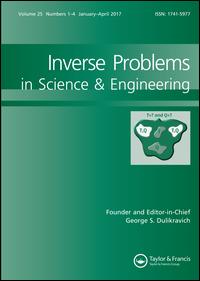
Inverse Probl Sci Eng, 2018, 26 (4), pp 581–600
DOI: http://dx.doi.org/10.1080/17415977.2017.1322964
Abstract
In this paper, at first by means of the differential quadrature element-incremental method as a computationally efficient and accurate numerical tool in conjunction with the Newton-Raphson method, the behaviour of the bicomponent fixed-bed adsorption is studied. The kinetics of the adsorption is formulated based on the linear driving force (LDF) approximation. Then, an inverse algorithm is employed to estimate the overall mass transfer coefficients of the adsorption column by using the measured time histories of the mole fractions of outlet multicomponent. The method allows one to obtain the values of the LDF mass transfer coefficients for the different adsorbents and adsorbates. The conjugate gradient method is adopted for the optimization procedure of the inverse algorithm. The robustness and applicability of the present inverse approach are demonstrated by solving different examples with the exact data of the known kinetics.
Majid Dastanian, Amir Abbas Izadpanah, and Masoud Mofarahi
J. Chem. Eng. Data, 2017, xx (x), pp xxx–xxx
DOI: 10.1021/acs.jced.7b00146
Abstract
In this study, the experimental data for dissociation conditions of carbon dioxide hydrates in the presence of 0.05 and 0.1 mass fraction KCl solution + 0.1 and 0.2 mass fraction methanol and ethylene glycol were measured and then reported at different temperatures and pressure ranges not available in the related literature. The phase equilibrium curves were drawn using an isochoric pressure-search method. To validate the used apparatus and the experimental findings of the current study and also to show the inhibition effects of the aqueous solutions used in this study, the experimental values were compared with some selected experimental data from the literature about the dissociation conditions of carbon dioxide hydrates in the presence of pure water and aqueous solution with 0.05 mass fraction KCl. Finally, to examine the inhibitory effect of various inhibitors and their synergies on each other, the suppressed temperature for hydrate formation was evaluated in the presence of different inhibitor solutions. This value showed that the rate of suppressed temperature for hydrate formation for each solution has been almost constant in various pressures. The synergy effect of KCl with methanol or glycol at low concentrations is negligible indicating that these two inhibitors have no impact on each other. It was also shown that, by increasing the concentration of the inhibitors, this rule was violated, the inhibitors were affected by each other, and the amount of inhibition effect increases. This synergy is of utmost importance for oil and gas pipelines and also for the industrial equipment that naturally contain some salt, in which alcohol or glycol will be added to prevent hydrate formation.
Morteza Afkhamipour & Masoud Mofarahi 
RSC Adv., 2017,7, 17857-17872
DOI: 10.1039/C7RA01352C, Review Article
Abstract
The gas-phase volumetric overall mass transfer coefficient (KGaV) plays a key role in the assessment of an absorption packed column's performance since it determines the height of an absorber column. The effective and useable data provided by KGaV is necessary for designing and scaling up absorption packed columns. This study provides the first comprehensive review of mass transfer performance in terms of KGaV for CO2 (KGCO2aV) absorption into amine solutions for absorber columns with random and structured packing. To date, researchers associated with the KGCO2aV parameter have focused on two main fields: experimental works and developing empirical correlations. For experimental works, KGCO2aV has been evaluated in the literature for a large number of conventional and improved amines over a range of operating parameters in laboratory-scale packed columns. In addition, researchers have developed empirical correlations for KGCO2aV based on operating parameters affecting KGCO2aV and physical properties. The details of research determining the KGCO2aV have been reviewed for low- and high-pressure absorption packed columns. Finally, directions for future research of the mass transfer performance for absorber packed columns in the CO2 capture process have been discussed.
26. An inverse method to estimate adsorption kinetics of light hydrocarbons on activated carbon
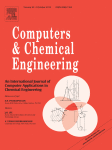
H. Rahideh, M. Mofarahi, P. Malekzadeh
Computers & Chemical Engineering, 2016, 93, 197–211
DOI: 10.1016/j.compchemeng.2016.06.014
Abstract
An inverse algorithm to estimate the adsorption kinetics inside the spherical particles in a constant molar flow (CMF) gas adsorber reservoir by measuring the bulk pressure is developed. The formulation includes Knudsen diffusion, surface diffusion, slip and viscous flows. To obtain an efficient algorithm, the conjugate gradient method (CGM) for optimization procedure and the incremental differential quadrature method (IDQM) for solving the governing equations are adopted. The results show that the Knudsen diffusion, surface diffusion, slip and viscous flows effects depend on the type of adsorbate and adsorbent gases. It is shown that the effective diffusivity is not constant and goes through a minimum at an intermediate pressure. Also, it is found that the Knudsen diffusion and the viscous flow are the dominant parts of the mass transfer process at low and high pressure, respectively, and despite the viscous flow, the Knudsen diffusion is highly sensitive to temperature change.
, , , Abedi
J. Chem. Eng. Data, 2016, 61 (7), pp 2638–2646
DOI: 10.1021/acs.jced.6b00374
Abstract
In the present work, an alternative type of composite adsorbent has been prepared by adding a small amount of about 7 wt % of activated carbon into the zeolite 13X structure. Besides, zeolite 13X is synthesized as a pure adsorbent for operational comparison. The synthesized zeolite 13X, as well as the composite form, is produced by a hydrothermal method. Moreover, both of them are characterized using a variety of conventional analyzing procedures including X-ray diffraction, X-ray fluorescence, Brunauer–Emmett–Teller, and scanning electron microscopy analyses. Both adsorbents are tested in CO2/N2 separation via a standard adsorption process. Pure adsorption data of CO2 and N2 were determined experimentally at three temperatures of (283, 303, and 323) K and pressures up to 1600 mbar in a static volumetric method on both adsorbents. The results of comparing the activated carbon-zeolite composite with the crystalline structure of zeolite 13X revealed upgrades in some properties. Furthermore, the binary adsorption data of the system have been also measured on both adsorbents and evaluated by ideal adsorbed solution theory. Finally, the job is completed by the presentation of binary equilibrium diagrams as well as the experimental selectivities.
,
Separation Science and Technology,2016 , 51 (10), pp 1627–1635
DOI: 10.1080/01496395.2016.1176045
Abstract
In order to maintain the quality of amine circulation in the gas sweetening process, activated carbon filters are used to remove hydrocarbons, degradation products, and antifoam from amine circulation. In this study, a new indirect gas chromatography analysis is proposed to evaluate saturation point of the activated carbon filters. In this method, the measured compositions of gas-phase hydrocarbons in equilibrium with amine solution samples (from the inlet and the outlet of the filter) were applied to estimate hydrocarbon compositions in amine solution by a thermodynamic model. The proposed method described in this study is believed to be a simple and viable approach to evaluate the performance of the activated carbon filters in the amine scrubbing plants.
Kewords: Activated carbon filter,Gas sweetening,Gas Chromatography,Amine scrubbing
23. Modeling and optimization of CO2capture using4-diethylamino-2-butanol (DEAB) solution
Afkhamipour, M.; Mofarahi, M.
International Journal of Greenhouse Gas Control vol. 49 February, 2016. p. 24-33
DOI:doi:10.1016/j.ijggc.2016.02.019

ISSN: 1750-5836
Abstract
A multi-layer perceptron neural network (MLPNN) model with Levenberg–Marquardt learning algo-rithm were applied to model CO2 capture by a novel amine solution called 4-diethylamino-2-butanol(DEAB). The MLPNN model predicted the CO2 concentration and temperature profiles along the heightof the packed column as the model output. Inlet feed conditions of the absorber column (flue gas andamine) were selected as the inputs of the MLPNN model. Experimental data about random and structured packed columns were extracted from the literature and used to train the MLPNN model. In addition, asystematic procedure, i.e. Taguchi method, was applied to obtain the significant sequence of process parameters affecting CO2 removal efficiency and to optimize the variables in the absorber column. Five levels of five variables, including lean amine temperature, amine concentration, CO2 loading of amine,gas temperature, and amine flow rate, were used for the optimization of the absorber column. The average absolute relative deviations (AARD) between the predicted results and the experimental data suggested that our MLPNN model could predict CO2 concentration and temperature profiles along the packed column (AARD% = 5.47 and 3.61, respectively). The signal to noise ratio analysis of the Taguchi method yielded a significant sequence of factors affecting CO2 removal efficiency in the packed column(CO2 loading > amine flow rate > amine concentration > gas temperature > amine temperature). This study demonstrated the acceptable accuracy of the MLPNN and Taguchi method in, respectively, the model ingand optimization of CO2 capture in amine solutions.
Keywords: Packed column, MLPNN model,Taguchi method,DEAB,CO2 removal, efficiency
Fatemeh Gholipour, Masoud Mofarahi
The Journal of Supercritical Fluids 2016, 111, Pages 47–54
DOI:10.1016/j.supflu.2016.01.008
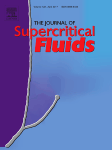
Abstract
A static, volumetric method has been used to determine the adsorption equilibrium of CH4and CO2andtheir binary mixtures on 13X molecular sieves at various temperatures between 273 and 343 K. Pressures for the pure component data extend up to 10 bar, while all binary data were obtained at 4 bar and 6 bar. Themeasured pure isotherms were regressed using different isotherm equations and the regressed parameters were applied to different thermodynamic models such as ideal adsorbed solution theory (IAST),vacancy solution theory (VST) and real adsorbed solution theory (RAST). CH4/CO2system that deviate from ideality is not well represented by IAST and VST, whereas RAST which include activity coefficient in the adsorbed phase as characterizing parameter for non-ideality, show a much better representation of the binary equilibria. Experimental selectivities CO2/CH4range from 26 to 2 at different pressure and temperatures. It is concluded that zeolite 13X suitable for natural gas industrial separation with yCO2< 0.2at 303 K and 4 bar. For landfill gas upgrading, where yCO2< 0.45, zeolite 13X can be successfully applied at 303 K, 4 bar and 303 K, 6 bar and 323 K, 4 bar.
21.Application of Inverse Method to Estimation of Gas Adsorption Isotherms
H. Rahideh · M. Mofarahi1 · P. Malekzadeh ·M. R. Golbahar Haghighi
Transport in Porous Media, 2015, 110 (3), pp 613-626
DOI: 10.1007/s11242-015-0576-8 
Abstract
Abstract As a first step to analyze the inverse kinetic of adsorption, an inverse algorithm is developed to estimate equilibrium adsorption isotherm in a gas storage vessel by using the dynamic transient internal pressure. In the present study, no prior information is need for the functional form of the unknown isotherm equation to solve continuity equation. The conjugate gradient method is employed for optimization procedure. The incremental differential quadrature method as a computationally efficient and accurate numerical tool is applied to solve the corresponding direct, sensitivity and adjoint problems. The accuracy of the presented approach is examined by simulating the exact data of known model. Good accuracy of the obtained results validates the presented approach.
20. Experimental Investigation and Thermodynamic Modeling of CH4/N2 Adsorption on Zeolite 13X
Masoud Mofarahi and Ali Bakhtyari
J. Chem. Eng. Data, 2015, 60 (3), pp 683–696
DOI: 10.1021/je5008235

Abstract
To implement an experimental study of CH4/N2 adsorption on Zeochem Co. zeolite 13X, a volumetric apparatus was utilized. In this regard, pure adsorption isotherms were measured at different temperatures [(273, 283, 303, 323, and 343) K] and pressures up to 10 bar, while binary data were collected at (303 and 323) K and different pressures and bulk gas phase molar fractions. Integral and differential thermodynamic consistency tests (TCT) were performed to validate the collected data and certify accuracy of the measurements. To have a thermodynamic view over the investigated system, thermodynamic functions such as enthalpy, entropy, surface potential, and Gibbs free energy were estimated numerically. Besides, the measured pure isotherms were regressed using different isotherm equations and the regressed parameters were applied to different models based on the thermodynamic theory of solutions, i.e., ideal adsorbed solution theory (IAST), vacancy solution models (VSM), and Peng–Robinson two-dimensional equation of state (PR 2D-EOS). All the models were applied in the predictive scheme. Experimental and predicted adsorption data were compared through the appropriate phase diagrams. Almost all the models could predict binary adsorption behavior of CH4 and N2 over zeolite 13X.
19. Numerical Modeling of Fluid Flow and Thermal Behavior of Different Nanofluids on a Rotating Disk
Masoud Mofarahi, Mohammad Amin Makarem, Peyman Jowkar, Benyamin Jafarian
Heat Transfer—Asian Research
DOI: 10.1002/htj.21166
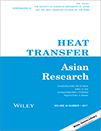
Abstract
The thermal and velocity profiles of various nanofluid systems on a rotating disk are simulated. Finite difference method, the orthogonal collocation method, and the differential quadrature method (DQM) of numerical approaches are used to solve the governing equations and are compared to determine the faster and more accurate solution procedure. Five nanoparticles Al, Al2O3, Cu, CuO, and TiO2 solved in three base fluids water, ethylene glycol, and engine oil are considered to be used on the disk at different volume fractions. A new general algorithm is presented for solving equations of a rotating-disk problem quickly and accurately and it is found that the DQM method is the best approach for this numerical simulation. Heat transfer performance of a rotating disk would be much better enhanced with water based Al nanofluid. A wide range of results for different base–fluid combinations with nanoparticles is presented with untransformed 3D results and effects of the variation of different parameters provides comprehensive insight and prevents inaccurate deductions.
18. Gas Adsorption Separation of CO2/CH4 System Using Zeolite 5A
Masoud Mofarahi ; Fatemeh Gholipour
Microporous and Mesoporous Materials 2014,200, Pages 1–10
DOI: 10.1016/j.micromeso.2014.08.022
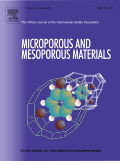
Abstract
Pure gas adsorption isotherms of carbon dioxide at (273, 283, 303, 323, 343) K and binary adsorption isotherms of carbon dioxide and methane at (303,323) K and pressures up to 10 bar on Zeochem Co. Zeolite 5A were measured using a volumetric method. Equilibrium gas phase compositions have been determined using a gas chromatograph (GC). The experimental binary equilibrium data were compared with equilibrium data calculated by ideal adsorbed solution theory (IAST), and vacancy solution model (VSM). A model analysis of the experimental data has been performed with real adsorbed solution theory (RAST) owing to not satisfactory prediction of multi-component behavior with IAST and VSM. For this purpose, activity coefficients, accounting forthe non-ideality of the adsorbed mixture, were calculated from the experimental data. The results of the pure experimental data showed that, the heat of adsorption for methane is approximately independent of loading (about 20kJ/mol), and for carbon dioxidedecreases by increasing loading when q<0.5 mol/kg. Subsequently, by increasing loading, the heat of adsorption increases upto q=2 mol/kg. The selectivity of both simulated landfill and biogas mixtures have been also measured experimentally. These data indicated that; zeolite 5A can be successfully applied in CO2/CH4 separation for landfill gas and biogas upgrading.
Afkhamipour, M.; Mofarahi, M.
International Journal of Greenhouse Gas Control vol. 25 March, 2014. p. 9-22
DOI: 10.1016/j.ijggc.2014.03.005 ISSN: 1750-5836.

Abstract
The modeling and simulation of CO2 capture processes with amine solutions are considered as important developments toward the detailed study and analysis of these processes. In the literature, the application of rate-based models for the modeling of CO2 capture processes by amine solutions has been proved superior to equilibrium-stage models. The results of rate-based models, however, depend strongly on the selection of model parameters such as physical properties, transport properties, kinetic models, and mass transfer correlations. In this study, sensitivity analysis was performed to investigate the effect of mass transfer correlations in combination with kinetic models on the performance of an absorber column. The reason for this investigation is to establish appropriate correlations that can be used for design of the CO2 capture process. Sensitivity analysis was performed using a rate-based model for capture of CO2 in monoethanolamine (MEA), methyldiethanolamine (MDEA), and 2-amino-2-methyl-1-propanol (AMP) solutions in packed columns containing structured and random packing. The model was successfully validated by comparison of obtained results with published experimental data. The sensitivity analysis revealed that the mass transfer correlations developed by Hanley and Chen (2012) to simulate a structured packing absorption column, obtained the best results in comparison with the other tested and analyzed correlations in this study. For a randomly packed column, the correlations suggested by Onda et al. (1968) exhibited the best results. The kinetic models tested and examined in this study had a determinant role in the results of the sensitivity analysis in a manner that reflected the assumptions used in development of the model such as the temperature and amine concentration ranges. Therefore, careful selection of the mass transfer correlations and kinetic models to be used in the rate-based absorber model is required for modeling of the CO2 capture process. Otherwise, serious errors in design of the CO2 capture process may result.
Keywords: CO2 capture; Packed column; Rate-based model; Sensivity analysis; Kinetic models; Mass transfer correlations
16. Pure and Binary Adsorption Equilibria of Methane and Nitrogen on Zeolite 5A
Ali Bakhtyari and Masoud Mofarahi
Journal of Chemical & Engineering Data vol. 59 issue 3 February 13, 2014 p. 626–639
DOI: 10.1021/je4005036. ISSN: 0021-9568.

Abstract
Adsorption isotherms of pure methane and nitrogen and their binary mixtures on Zeochem Co. zeolite 5A were measured using a static volumetric apparatus. Pure isotherms were measured at (273, 283, 303, 323, and 343) K and pressures up to 10 bar, while binary data were measured at (303 and 323) K and different pressures and bulk gas phase compositions. Experimentally measured data were validated using the integral thermodynamic consistency test. In contrast to the aforementioned binary measurements, predictions of different thermodynamic models utilizing pure adsorption isotherms were used to describe binary adsorption behavior of methane and nitrogen over zeolite 5A. Models based on the thermodynamic theory of solutions such as ideal adsorbed solution theory, vacancy solution models, and two-dimensional equations of state were used for this purpose. Experimental and predicted equilibrium data were compared through the appropriate phase diagrams. Predicted selectivity curves were compared against experimental data. All the proposed models are capable to describe adsorption equilibria of the investigated system. Results of the present study show that methane and nitrogen form an ideal and energetically homogeneous adsorptive system on Zeochem Co. zeolite 5A.
Masoud Mofarahi;Ehsan Javadi Shokroo
Petroleum & Coal Vol. 55(3), 2013. p. 216-225

Abstract
The performances of two types of zeolite 5A and zeolite 13X in oxygen separation from air with a two-bed six-step pressure swing adsorption (PSA) system were investigated using mathematical modeling. The effects of feed flow rate, adsorption step pressure, adsorption step time and purge to feed ratio on oxygen purity and recovery are studied. Comparison of two types of zeolites shows that the PSA process performance (in terms of purity and recovery) was better with zeolite 13X than the zeolite 5A. Furthermore, Results of simulation indicated a very good agreement with some current literature experimentally work.
Maryam Kiani Borazjania, Hamid Reza Safaeib, Majid Panahandehb, Ali Reza Kiania
Masoumeh Kianic, Masoud Mofarahi
S. Afr. J. Chem. vol. 66, 2013. p. 279-281
DOI: .... ISSN: 0379-4350

Abstract
Nano-materials are considered as suitable heterogeneous catalysts for many organic reactions. Herein oxidized carbon nanotube (SWCNTs-COOH) has been reported as a heterogeneous catalyst, for protection of carbonyl groups as hydrazones in EtOH at 80 °C. The reactions proceed smoothly with good to excellent yields, and the SWCNTs-COOH used can be recycled.
Keywords: Carbon nanotubes, protection, catalyst, carbonyl group
13. Pure and binary adsorption isotherms of ethylene and ethane on zeolite 5A
Mofarahi, Masoud; Salehi, Seyyed Milad.
Adsorption vol. 19 issue 1 February 2013. p. 101 - 110
DOI: 10.1007/s10450-012-9423-1. ISSN: 0929-5607.

Abstract
Pure and binary adsorption equilibrium data of ethylene and ethane on zeolite 5A were collected with a volumetric method for the temperature range 283 K to 323 K and pressure up to 950 kPa. The applicability of the binary adsorption prediction by the vacancy solution theory (VST) was investigated. Further individual adsorption and selectivity were obtained by VST prediction. According to the experimental results, zeolite 5A has a high adsorption capacity and selectivity for ethylene in the ethylene/ethane system. VST predicts that ethylene selectivity increases with pressure; it also shows that the amount of ethylene separated by zeolite 5A increases as the temperature decreases at a specified pressure.
Keywords: Adsorption; Zeolite 5A; Ethylene/ethane separation system; Vacancy solution theory
Afkhamipour, M.; Mofarahi, M.
International Journal of Greenhouse Gas Control vol. 15 July, 2013. p. 186-199
DOI: 10.1016/j.ijggc.2013.02.022. ISSN: 1750-5836.

Abstract
In this study, two mathematical models including rate-based and equilibrium-stage were applied and compared for CO2 absorption by 2-amino-2-methyl-1-propanol (AMP) solution in a packed column. In the rate-based model, process of simultaneous mass and energy transfer across the interface was modeled by means of rate equation and mass transfer coefficients. The rate-based model was based on the two-film theory. In contrast, the equilibrium-stage model was based on the theory of theoretical number stages combined with the concept of Murphree efficiency. In this model, different values of Murphree efficiencies were used along the absorption column. The two modeling approaches were validated by comparison of obtained results with published experimental data. The simulation of the absorber column shows the rate-based model gives a better prediction of the temperature and concentration profiles compared to the equilibrium-stage model. As a result, for a detailed process design the rate-based model should be applied. Also, comparison of the absorption performance between the CO2-MEA and CO2-AMP system in a bench-scale absorber packed with high efficiency packing was performed. Finally, The effect of important process parameters such as CO2 partial pressure, CO2 loading of amine solution, flow rate of amine solution, concentration of amine solution and solution temperature on the CO2 removal efficiency were analyzed. The results of this analysis showed that CO2 removal efficiency increases with the increase of solution flow rate, solution concentration and solution temperature (in the CO2 loading of more than 0.15) and decreases with the increase of the CO2 loading of AMP solution (in the CO2 loading of more than 0.15) and CO2 partial pressure.
Keywords: CO2 capture; AMP solution; Packed column; Rate-based model; Equilibrium-stage model; Murphree efficiency
Salkuyeh, Yaser Khojasteh; Mofarahi, Masoud.
International Journal of Energy Research vol. 37 issue 8 25 June 2013. p. 973-981
DOI: 10.1002/er.2899. ISSN: 0363-907X.

Abstract
Among various developed methods for CO2 capturing from industrial flue gases, chemical absorption system is still considered as the most efficient technique, because of its lower energy requirement and also its applicability for low concentration of CO2 in the inlet gas stream. Also, it can be used to retrofit the existed power plants, which are the major industrial CO2 emission sources, without changing their design condition. Selection of a suitable solvent is the first parameter that should be considered in the design of capture plants that use absorption technology. The most important challenge for using chemical solvents is finding the optimum operating conditions to minimize the energy requirement. Study of technical parameters can be helpful to improve the overall capture plant efficiency. In this paper, CO2 capture plant has been simulated for different solvents to compare their performance and energy requirement. To improve the plant overall efficiency, effect of the main operating factors such as amine flow rate, temperature, inlet gas temperature, and pressure has been studied in this paper. This analysis indicates the best chemical solvent for various cases of inlet flue gas. This parametric study reduces the overall energy requirement and helps design a cost-effective plant. Copyright © 2012 John Wiley & Sons, Ltd.
Keywords: CO2 capture; chemical solvent; power plant; energy; absorption
10. Comparison of MEA and DGA performance for CO2 capture under different operational conditions.
Salkuyeh, Yaser Khojasteh; Mofarahi, Masoud.
International Journal of Energy Research vol. 36 issue 2 February 2012. p. 259-268
DOI: 10.1002/er.1812. ISSN: 0363-907X.

Abstract
Carbon capture and storage from flue gases is the most common method to reduce greenhouse gas emissions. Using a primary amine as the solvent of CO2 capture unit is popular because of its high activity and ability to be used for streams with low concentration and low partial pressure of CO2. Monoethanolamine(MEA) and Diglycolamine(DGA) are the most common kinds of primary amines which have been traditionally used in many natural gas sweetening plants. In this research, the capture plant has been designed for these two solvents at various CO2 concentrations in the feed flue gas. This paper proposes different possible alters to overcome the high energy requirements of capture plant. It also presents the results of technical evaluation of different parameters, in order to design an actual plant with minimum energy requirement. The results of different parameters show that for DGA solvent, there will be an improvement in overall energy usage in the capture plant rather than MEA for some special cases. To gain the practical results, actual stages have been used for absorber and stripper instead of equilibrium stages. Copyright © 2011 John Wiley & Sons, Ltd.
Keywords:CO2 capture; parametric design; MEA; DGA; avoided CO2:
9. New mixing rule for predicting multi-component gas adsorption.
Mofarahi, M.; Hashemifard, S. A.
Adsorption vol. 17 issue 2 April 2011. p. 311 - 323
DOI: 10.1007/s10450-010-9288-0. ISSN: 0929-5607.

Abstract
The present work describes a predictive model for ascertaining the multi-component gas adsorption equilibria. The model utilizes special form of covolume-dependent (CVD) mixing which is combined with the generalized form of 2-D EOS. Four well known 2-D EOSs; van der Waals, Soave-Redlich-Kwong, Peng-Robinson, Eyring along with the modified CVD mixing rule were used to predict the total adsorption of several binary and ternary systems. Based on the concept of the CVD mixing rule, it was inspired that CVD mixing rule could be a binding bridge between the molecular size and the molecular interaction. To show this, the ratio of the classical mixing rule %AAD to the CVD mixing rule %AAD were plotted versus the difference of the collision or the Leonard-Jones diameters of the gas molecules in the mixtures. It shows that there is a criterion between the CVD and the classical mixing rules in terms of molecular size difference. It seems that, Δσ LJ≈0.60 Å is the criterion. The CVD mixing rule is approximately predominant in the region of Δσ LJ≥0.60 Å, whilst, region of Δσ LJ≤0.60 Å is nearly governed by the classical mixing rule. All predictions by the new mixing rule and the classical mixing rule were compared with the experimental data from the case studies. The new form of the mixing rule is in good agreement with the experimental data even for the non-ideal systems; hence provides a powerful framework to predict multi-component gas adsorption.
Keywords: CVD mixing rule; Gas adsorption; Multi-components; Prediction
8. Pure and Binary Adsorption Isotherms of Nitrogen and Oxygen on Zeolite 5A.
Mofarahi, Masoud; Seyyedi, Majid.
Journal of Chemical & Engineering Data vol. 54 issue 3 March 12, 2009. p. 916-921
DOI: 10.1021/je8006919. ISSN: 0021-9568.

Abstract
Adsorption isotherms were measured for pure nitrogen, oxygen, and their binary mixtures (20 %, 40 %, and 60 % nitrogen in the mixture) on a commercial zeolite 5A. The measurements were conduced using a volumetric method at temperatures of (273, 283, 303, and 343) K and at pressures to 950 kPa. The 2D equations of state of van der Waals, Soave−Redlich−Kwong, Peng−Robinson, and Eyring have been applied to represent total adsorption for the pure and binary systems. The amount of adsorption of each component has been obtained in the mixture as well as the selectivity by thermodynamic prediction. Experimental results indicate a very good agreement with thermodynamic modeling and with some current results in the literature.
7. Oxygen Separation from Air by Four-Bed Pressure Swing Adsorption.
Mofarahi, Masoud; Towfighi, Jafar; Fathi, Leila.
Industrial & Engineering Chemistry Research vol. 48 issue 11 June 3, 2009. p. 5439-5444
DOI: 10.1021/ie801805k. ISSN: 0888-5885.
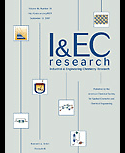
Abstract
A study on a four-bed seven-step pressure swing adsorption (PSA) using zeolite 5A was performed experimentally and theoretically for separation of oxygen from air. In this process the steps of feed pressurization, production, blowdown, purge, pressure equalization (two steps), and product pressurization are included in a cycle. The effects of various operating parameters such as adsorption pressure, cycle time, production rate, and purge rate on the product purity and recovery were investigated experimentally. Oxygen purity and recovery both increase when adsorption pressure increases. For most of the experiments at the highest purge rate, a higher purity of oxygen is obtained, but the recovery of oxygen is reduced. Oxygen recovery increases as production rate increases while the purge flow rate remains constant. It was observed that increasing the cycle time increases the performance of the process. An equilibrium based isothermal model in conjunction with an LDF (linear driving force) approximation was employed to simulate process performance. Comparison of the results obtained from the experiments and simulation results shows reasonable agreement.
6. Design of CO2 absorption plant for recovery of CO2 from flue gases of gas turbine
, Arsalan Farahnak
Energy vol. 33 issue 8 June 3, Auguest, 2008. p.1311–1319
DOI: 10.1016/j.ijggc.2013.02.022. ISSN: 1750-5836.

Abstract
The ongoing human-induced emission of carbon dioxide (CO2) threatens to change the earth's climate. A major factor in global warming is CO2 emission from thermal power plants, which burn fossil fuels. One possible way of decreasing CO2 emissions is to apply CO2 removal, which involves recovering of CO2 from energy conversion processes. This study is focused on recovery of CO2 from gas turbine exhaust of Sarkhun gas refinery power station. The purpose of this study is to recover the CO2 with minimum energy requirement. Many of CO2 recovery processes from flue gases have been studied. Among all CO2 recovery processes which were studied, absorption process was selected as the optimum one, due to low CO2 concentration in flue gas. The design parameters considered in this regard, are: selection of suitable solvent, solvent concentration, solvent circulation rate, reboiler and condenser duty and number of stages in absorber and stripper columns. In the design of this unit, amine solvent such as, diethanolamine (DEA), diglycolamine (DGA), methyldiethanolamine (MDEA), and monoethanolamine (MEA) were considered and the effect of main parameters on the absorption and stripping columns is presented. Some results with simultaneous changing of the design variables have been obtained. The results show that DGA is the best solvent with minimum energy requirement for recovery of CO2 from flue gases at atmospheric pressure.
Keywords: Carbon dioxide recovery; Chemical absorption; Amines; Gas turbine; Flue gases
5. Four-Bed Vacuum Pressure Swing Adsorption Process for Propylene/Propane Separation
Masoud Mofarahi, Mojtaba Sadrameli,Jafar Towfighi
Industrial & Engineering Chemistry Research vol. 44 issue 5 January 20, 2005. p. 1557–1564
DOI: 10.1021/ie034016k. ISSN: 0888-5885.

Abstract
A vacuum pressure swing adsorption (VPSA) using zeolite 5A was studied experimentally and theoretically. An equimolar mixture of propylene/propane was used as a feed gas for an eight-step, four-bed VPSA process. Isotherm data of zeolite 5A at various temperatures and breakthrough curves of propylene and propane for both adsorption and regeneration steps were obtained to acquire the input parameters for the test runs with the pilot plant. Experimental measurements by the pilot plant have been obtained between a maximum pressure of PH = 5.8−6.4 bar and a minimum pressure of PL = 0.1−0.05 bar at a constant temperature of 70 °C. The effects of feed rate and dilution with H2, purge rate, and vacuum pressure on the product purity and recovery were also investigated via experimentation. Using a feed rate of 320 NL/h of a mixture of 50% propylene/propane at 70 °C, a purity of 92% propylene and a recovery of 29% were obtained. Comparison of the results from the experiments and the simulation gave a reasonable agreement.
4.Characterization of Activated Carbon by Propane and Propylene Adsorption
Masoud Mofarahi, Mojtaba Sadrameli, and Jafar Towfighi
Journal of Chemical & Engineering Data vol. 48 issue 3 July 17, 2003. pp 1256–1261
DOI: 10.1021/je0340553 ISSN: 0021-9568.

Abstract
Two types of commercial activated carbons, Westvaco BAX 1100 and Chemviron LAC 30-57, were characterized by microporosity, equilibrium, and kinetic adsorption of propane and propylene. The porosity was determined by the measurement of the N2 adsorption isotherm at 77 K. Single component equilibrium adsorption of propane and propylene on the adsorbents was measured in the temperature range (273 to 343) K and the pressure range (0.0001 to 1) bar and correlated by several well-known isotherm models. The enthalpies of adsorption were estimated by the Clausius−Clapeyron equation and its dependence on adsorption coverage. Fractional uptake experiments performed to study the single component kinetics and apparent diffusivity were evaluated.
3. Oxygen Separation from Air Using Pressure Swing Adsorption
Fathi L.; Towfighi, J.: Mofarahi, M.
J. Sep. Sci. Eng. , 2009, 1,1
2. Study of a Four-Bed Pressure Swing Adsorption for Oxygen Separation from Air
Mofarahi, M.; Moghadaszadeh Z.; Towfighi J.
Int. J. Chem. Bio. Eng.,2008,3;140
1. SHAHAB-PC Based Simulatorfor Prediction of Furnace Run Length the Pyrolysis of Hydrocarbons
(Ethane to Naphtha)
Towfighi J., Karimzadeh R., Sadrameli M., Mofarahi, M., Niaei A.,
Saedi G., Hosseini S., Mokhtarani B.
Iranian J. of Chemical Engineering, 2004, 1, 55

